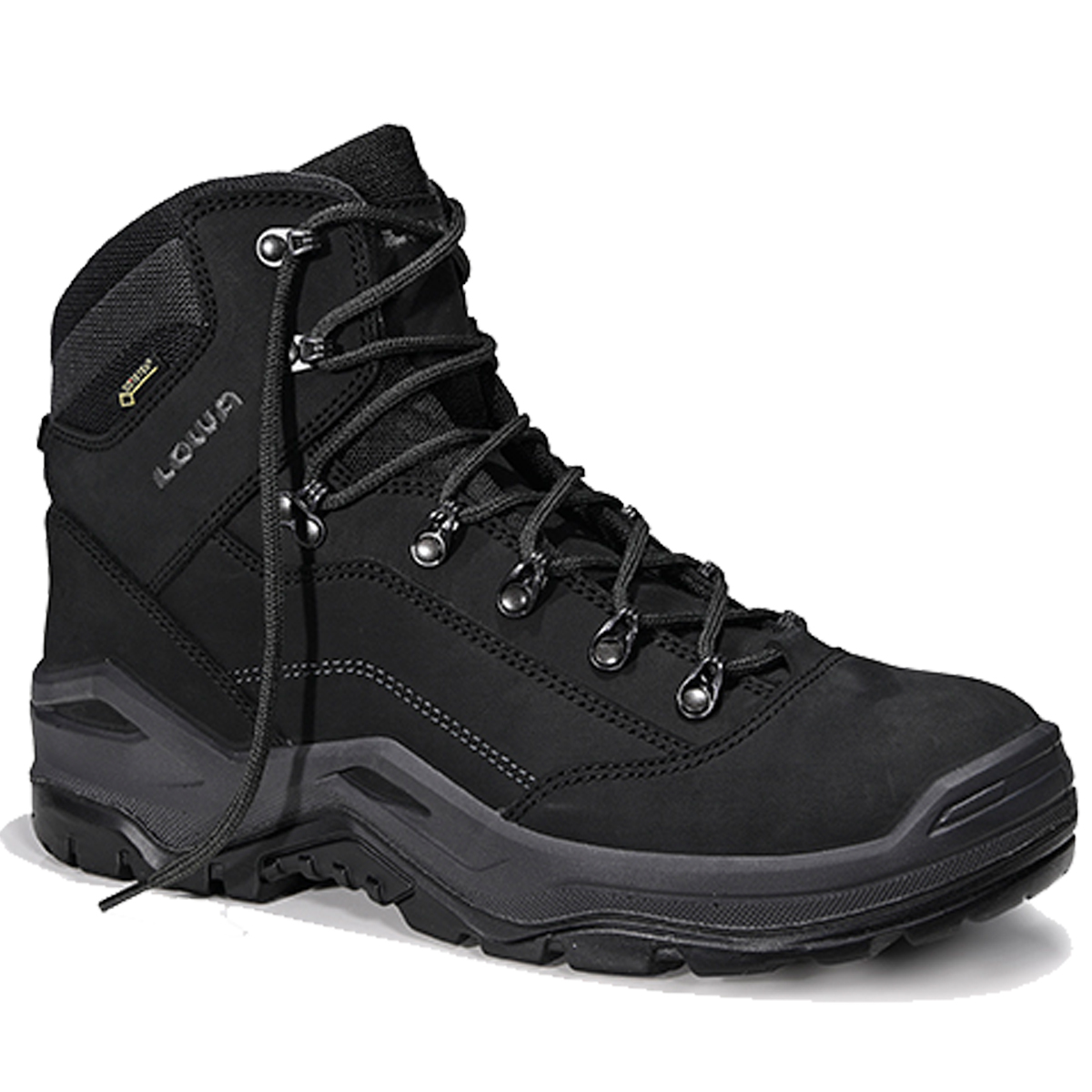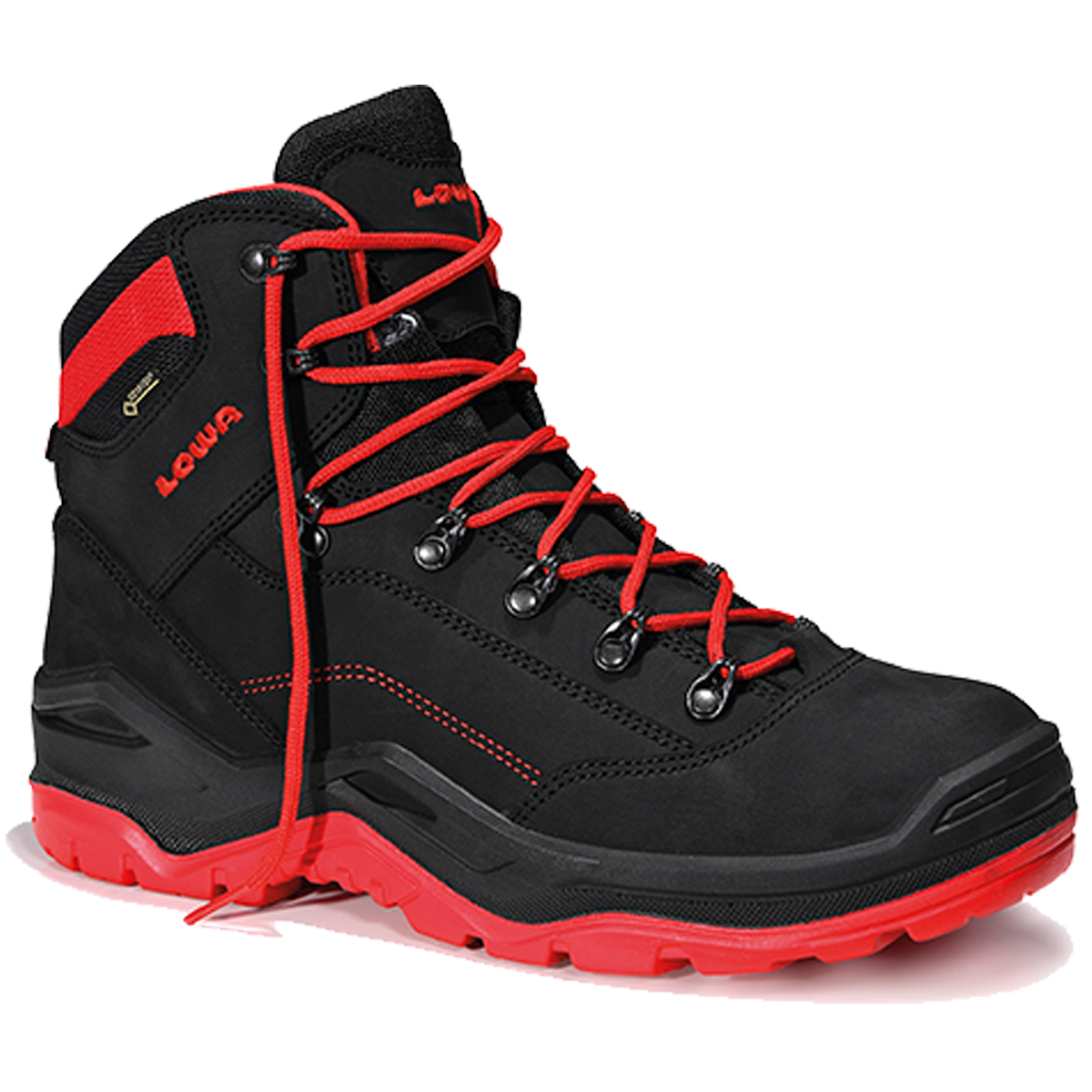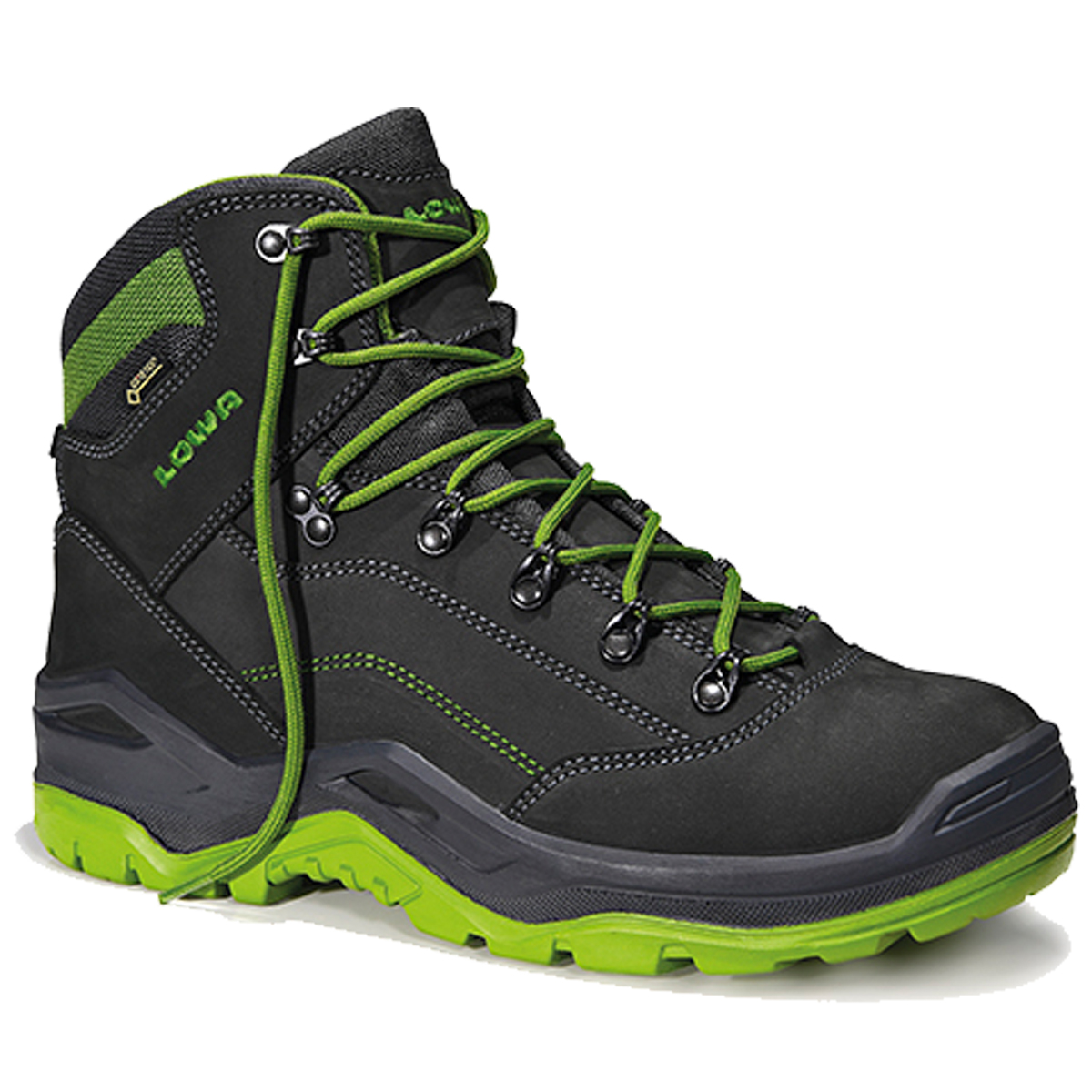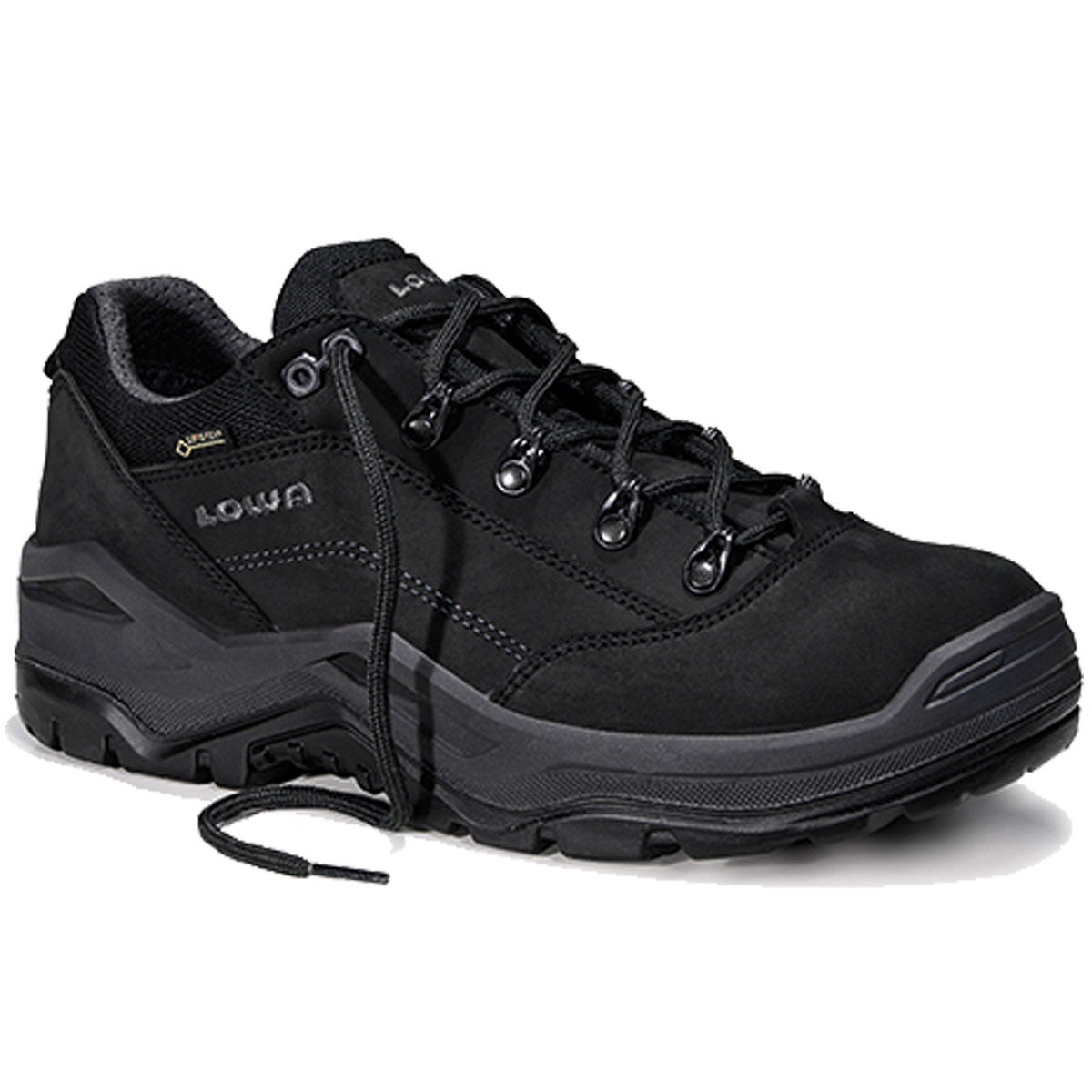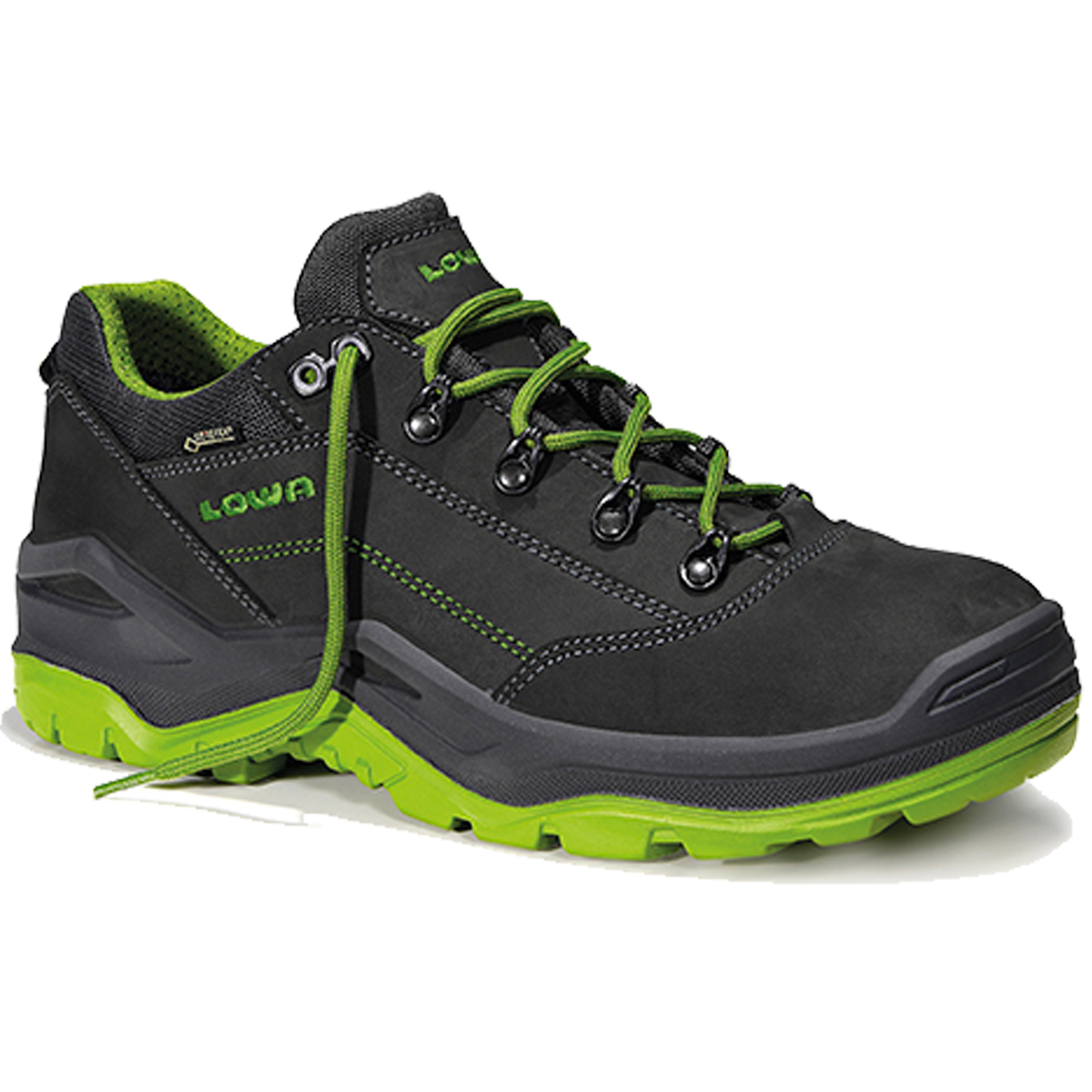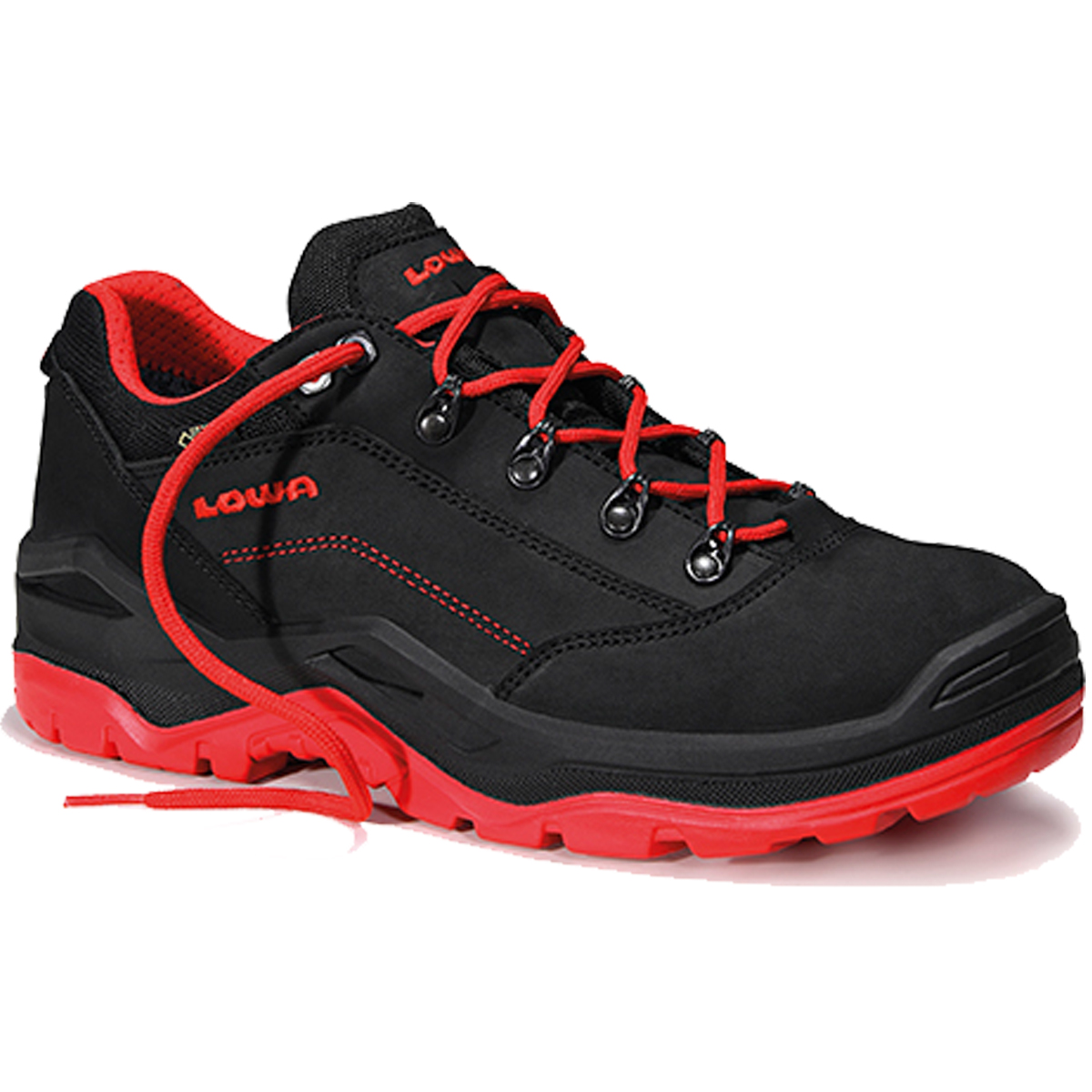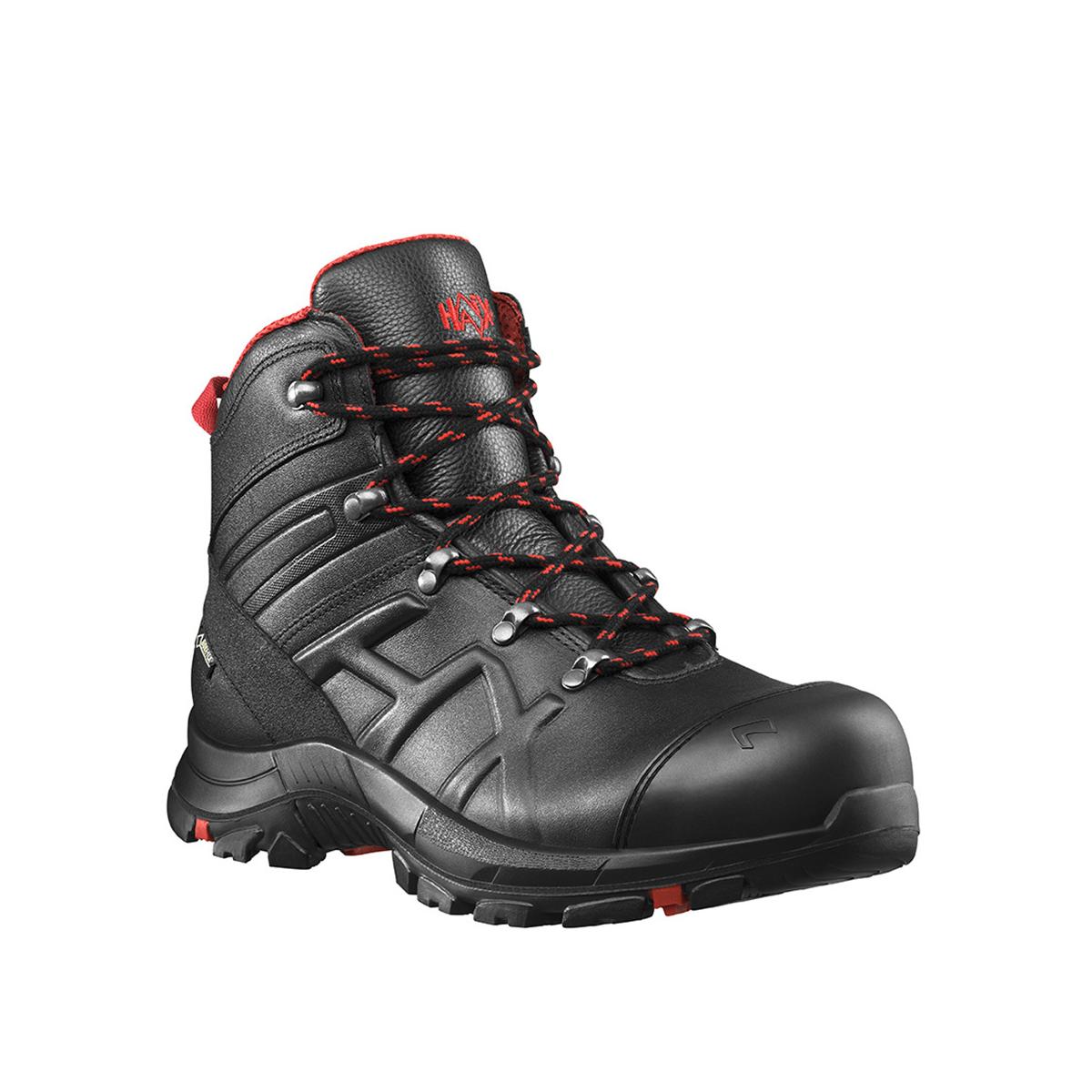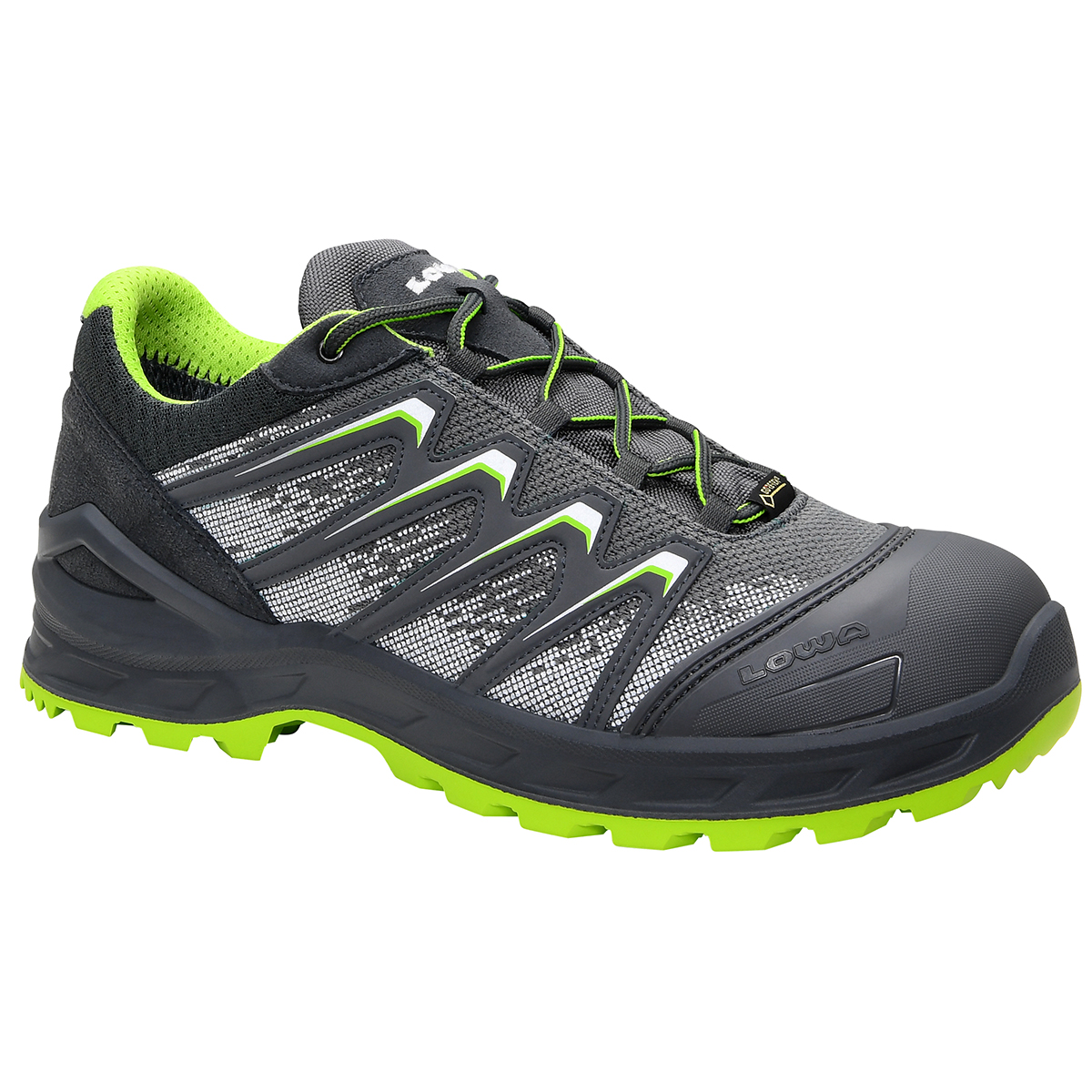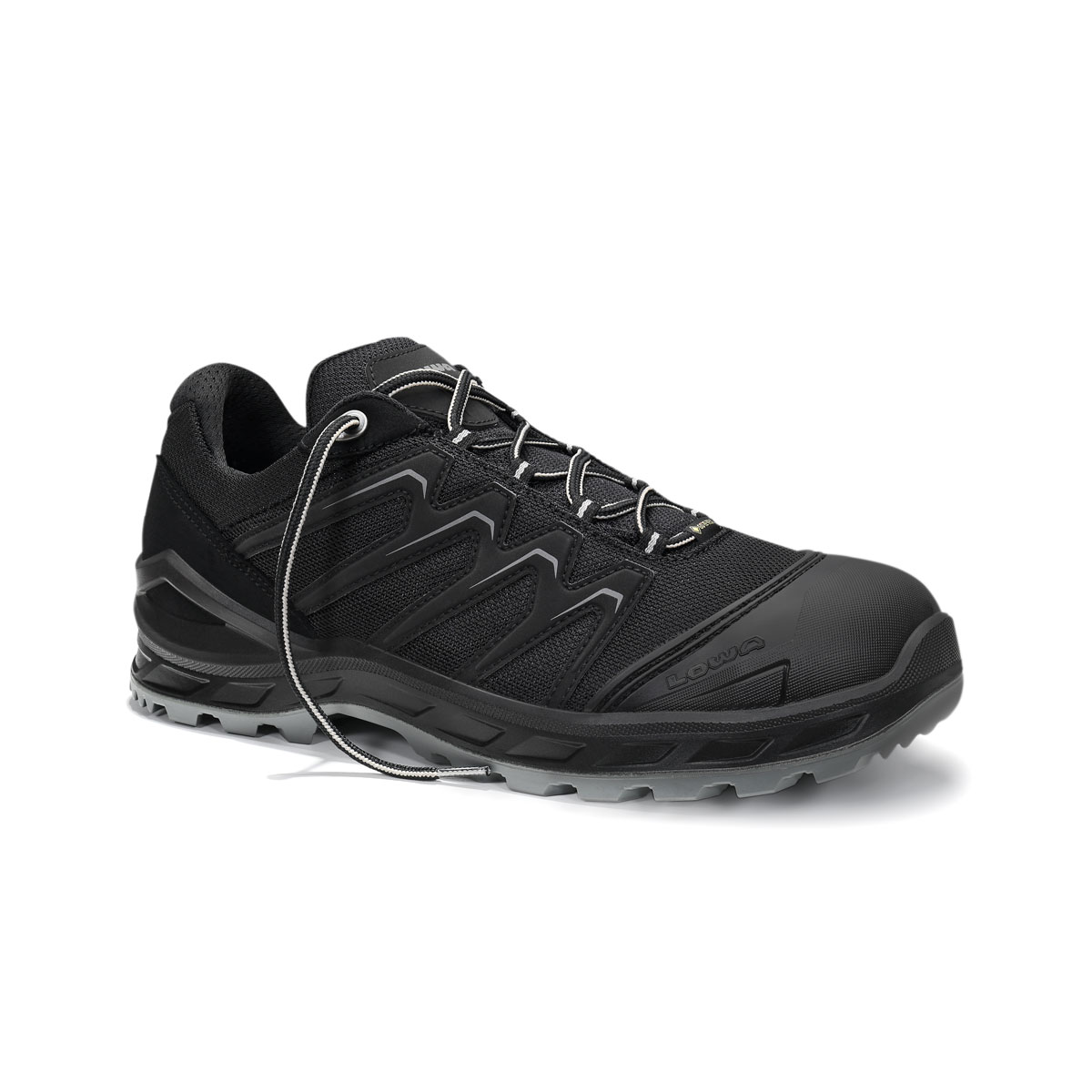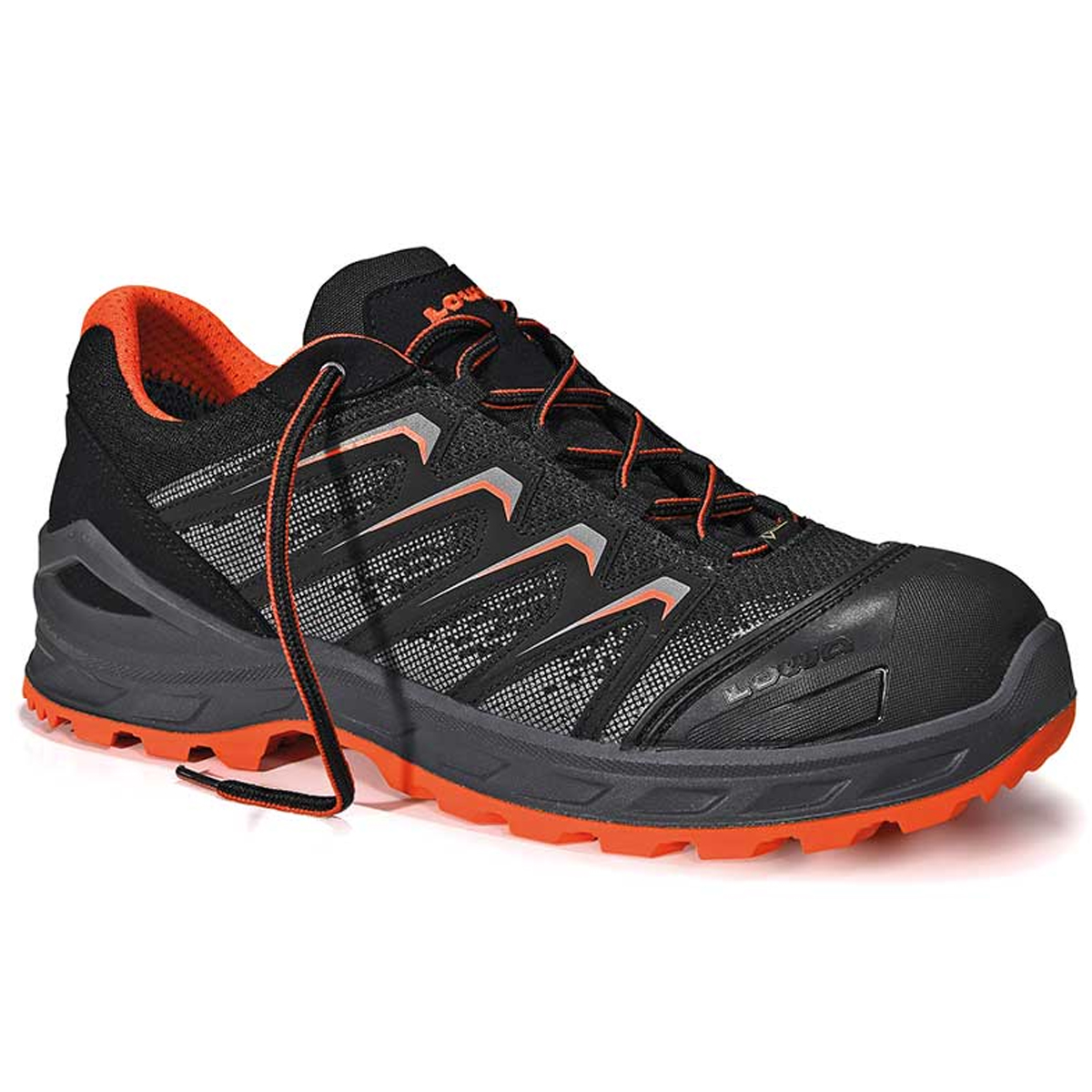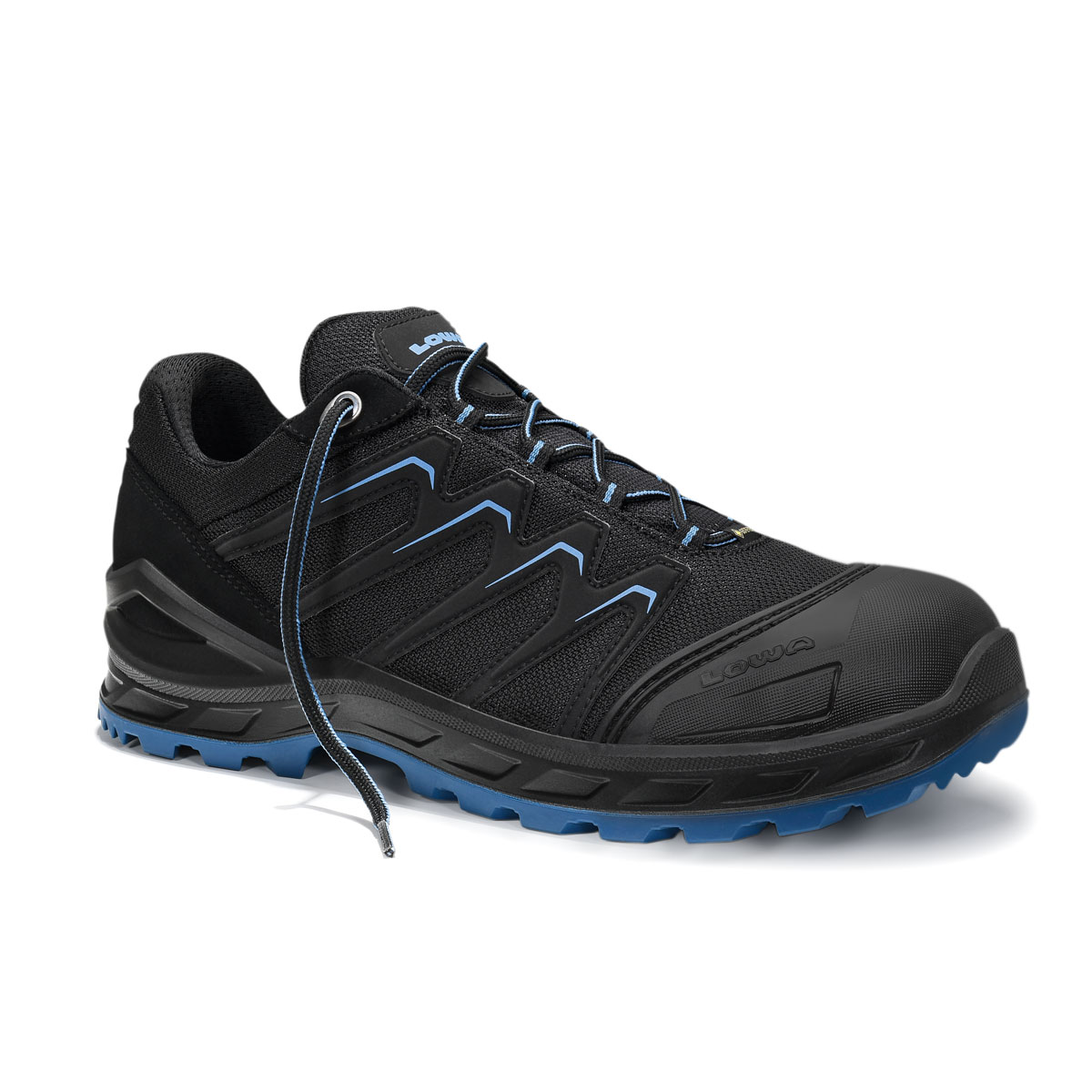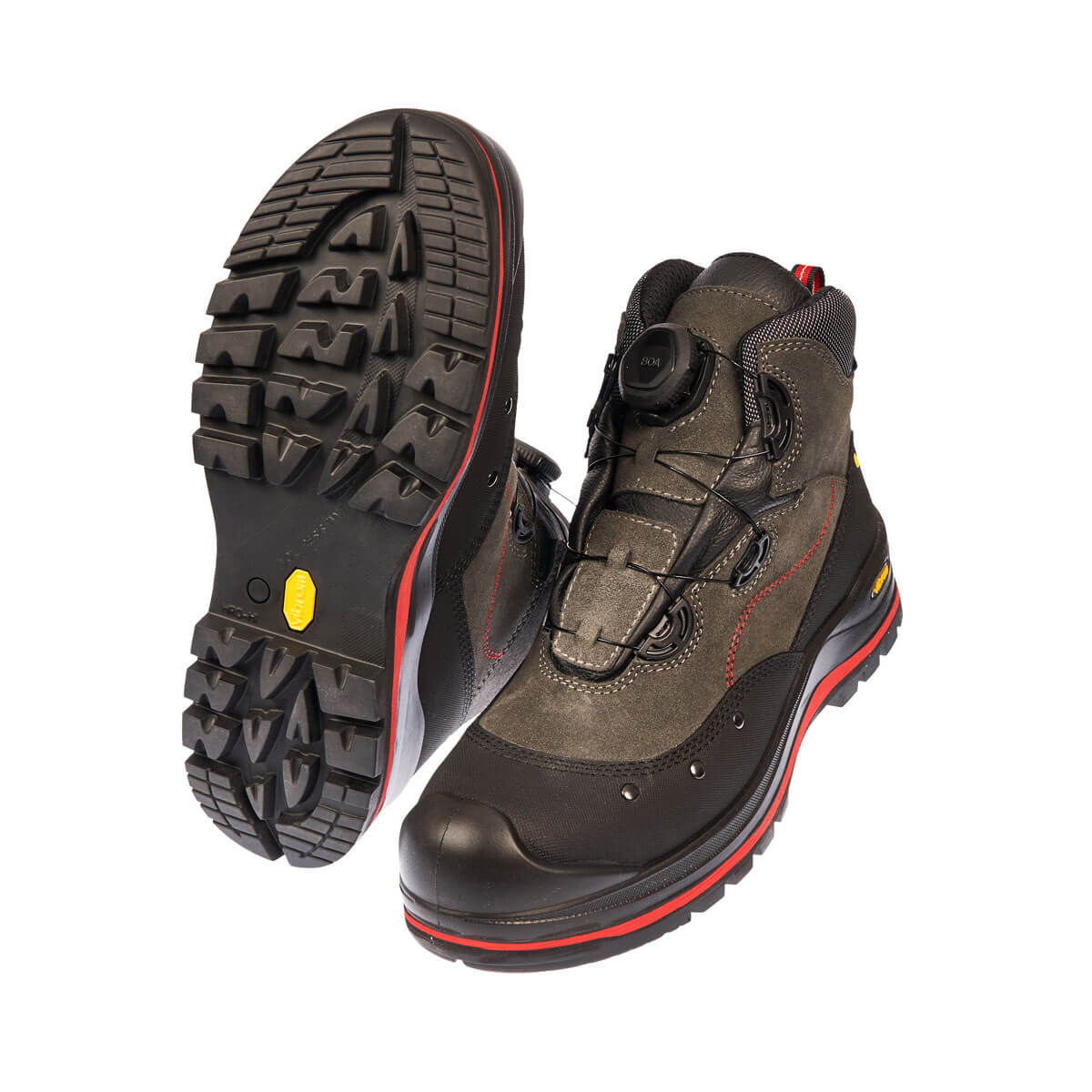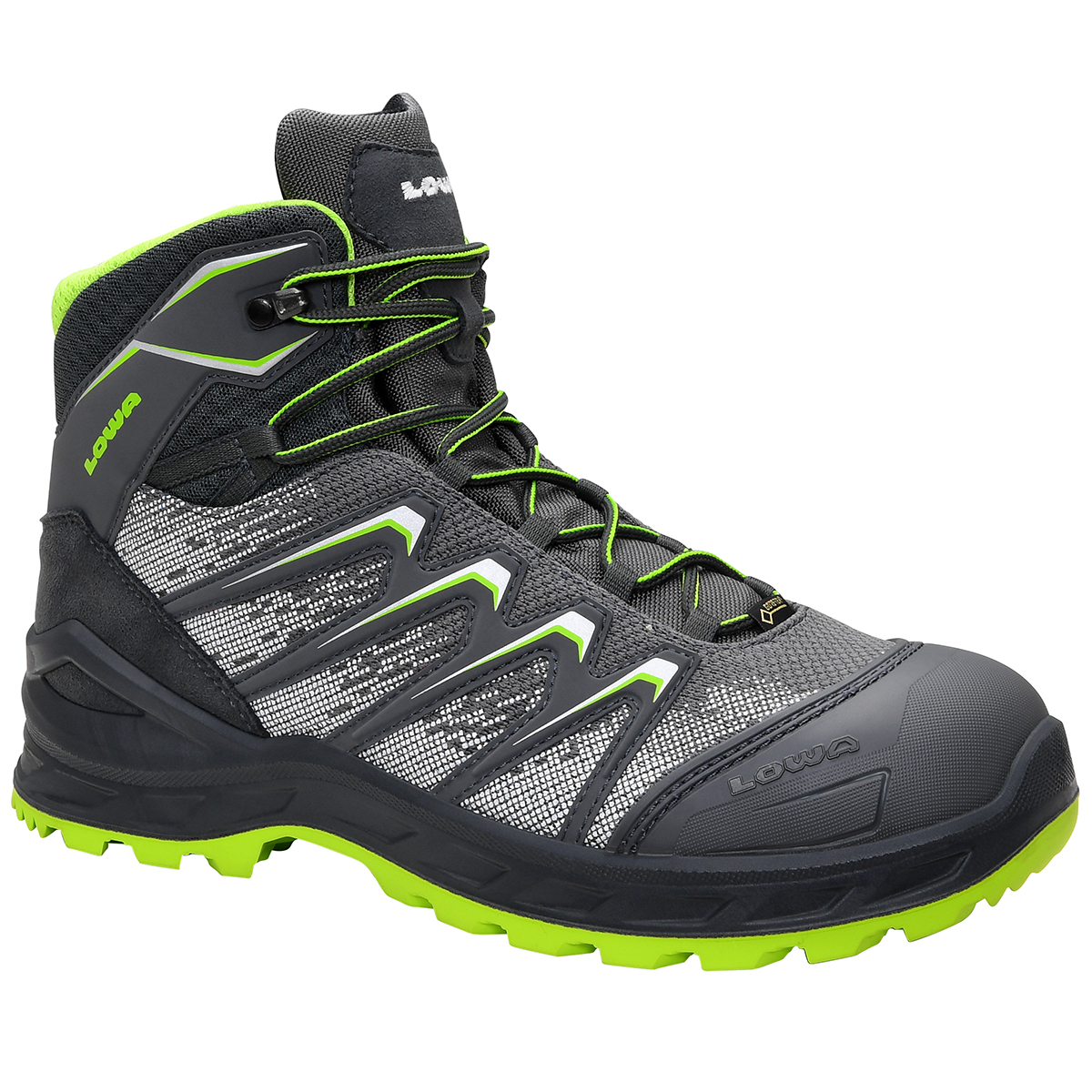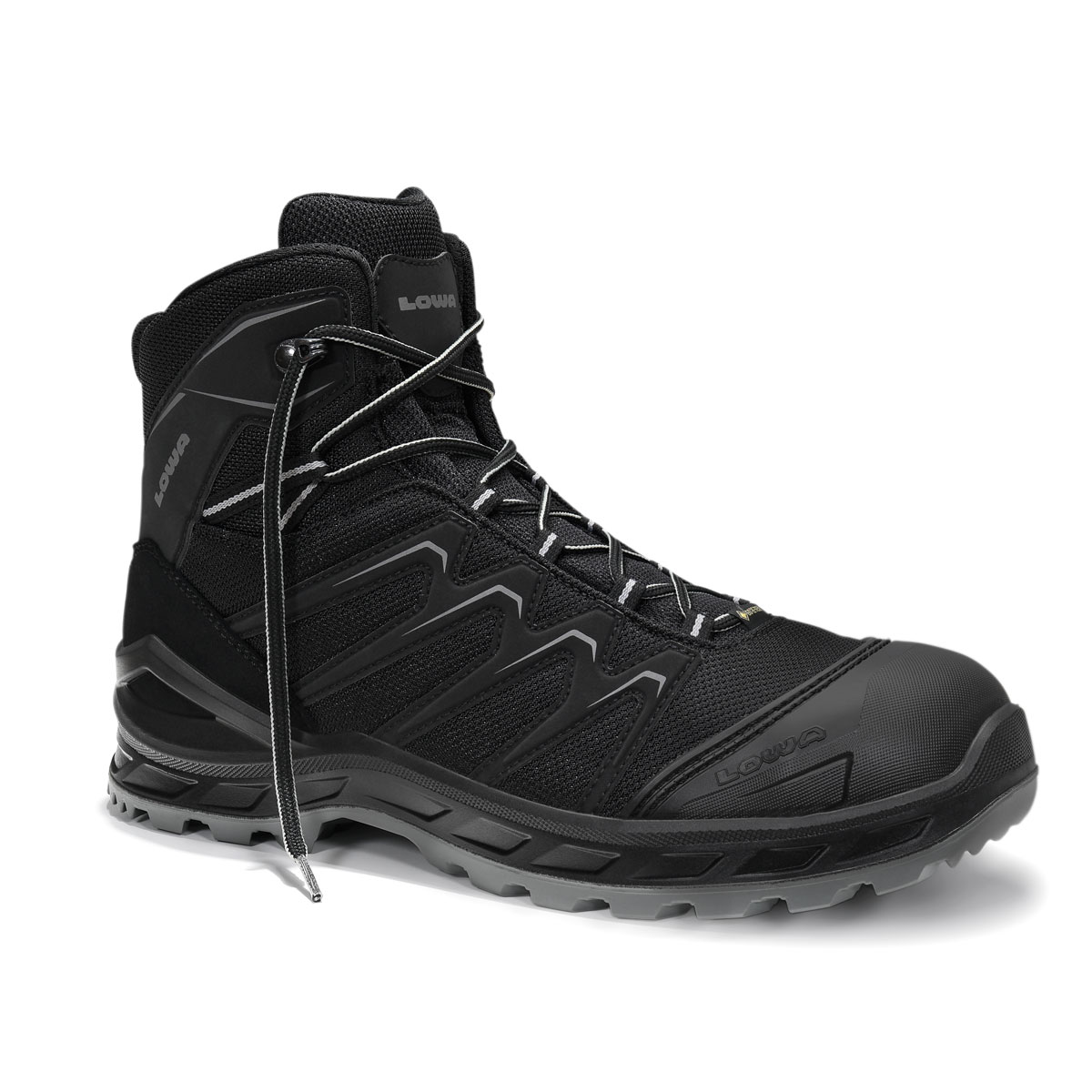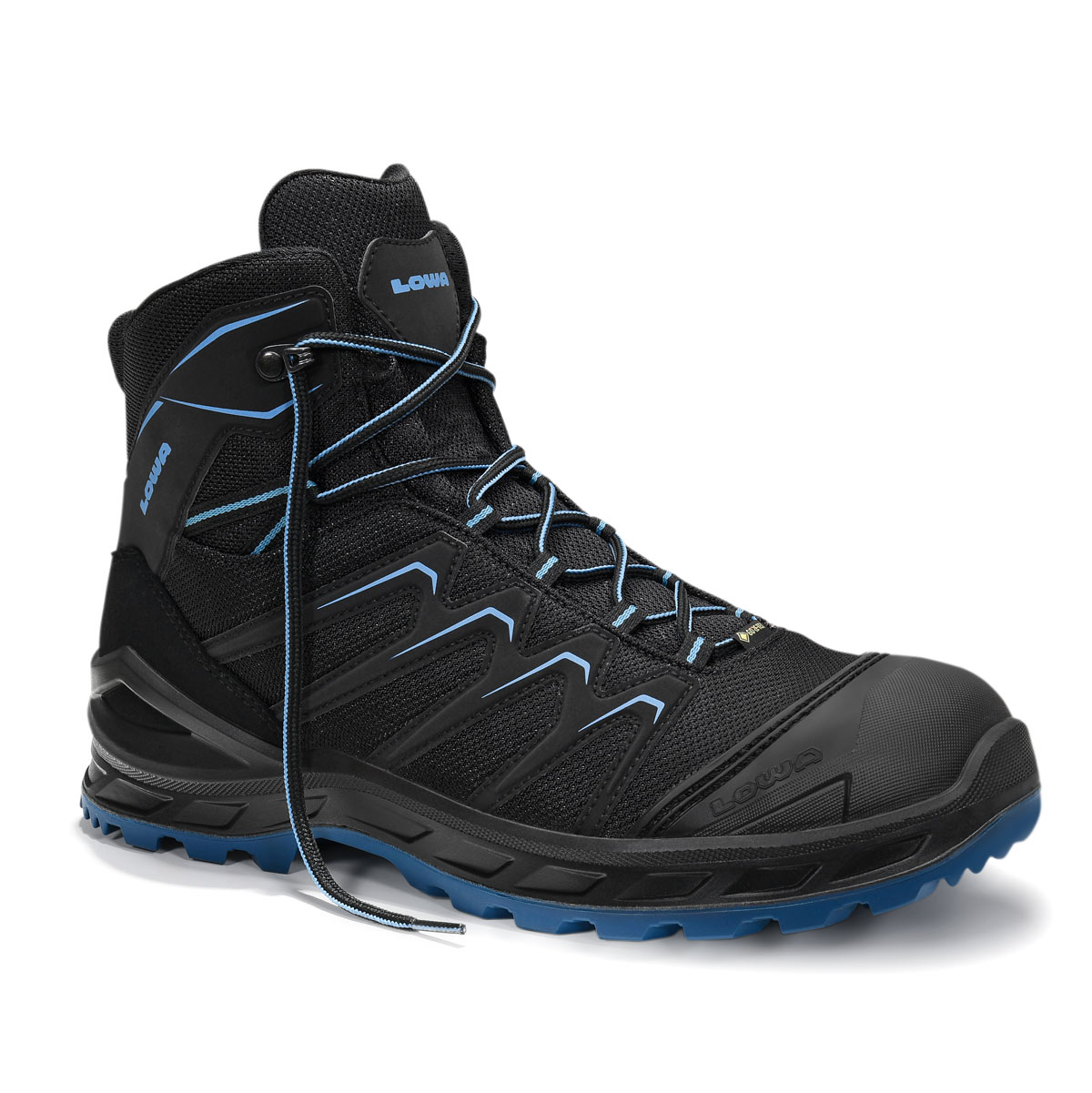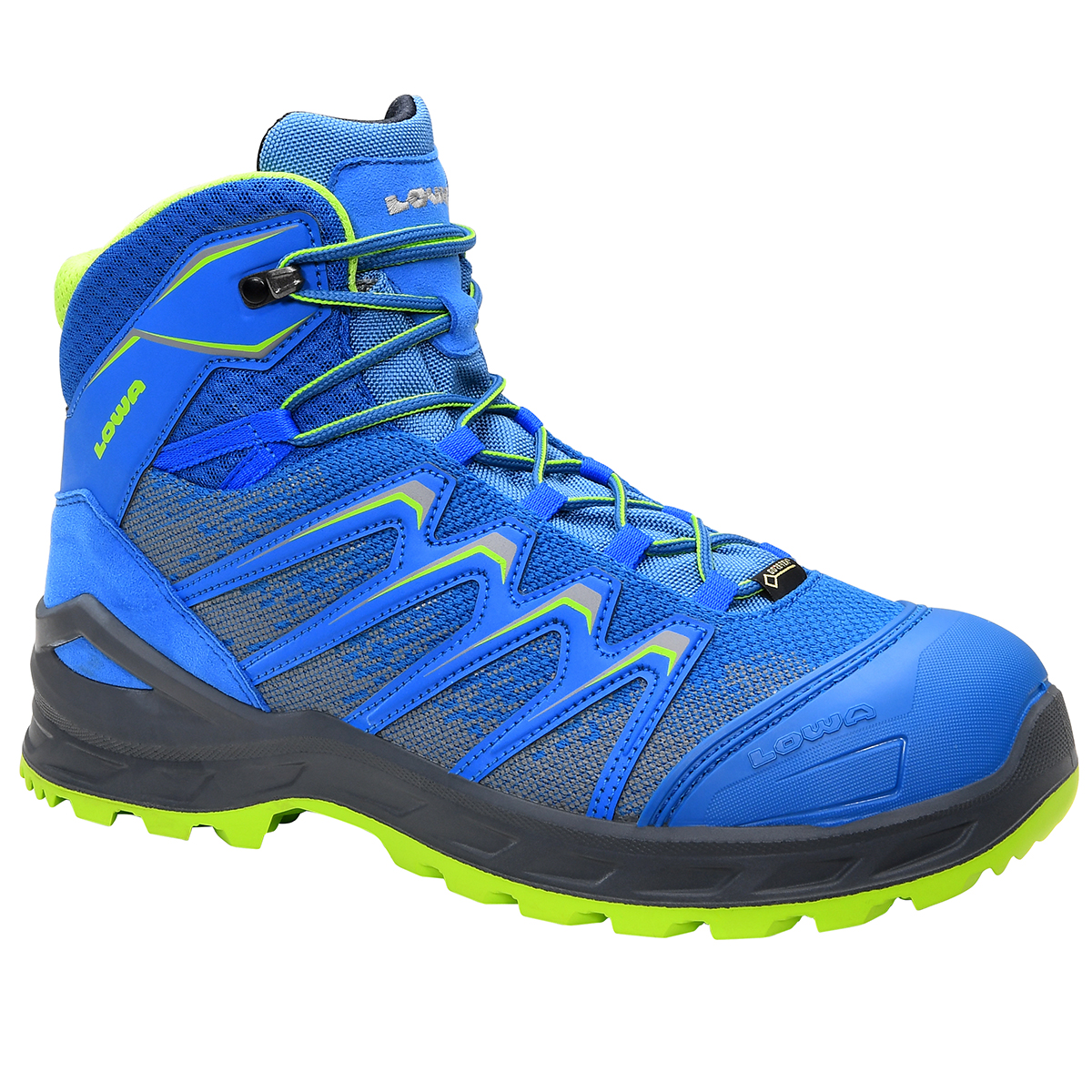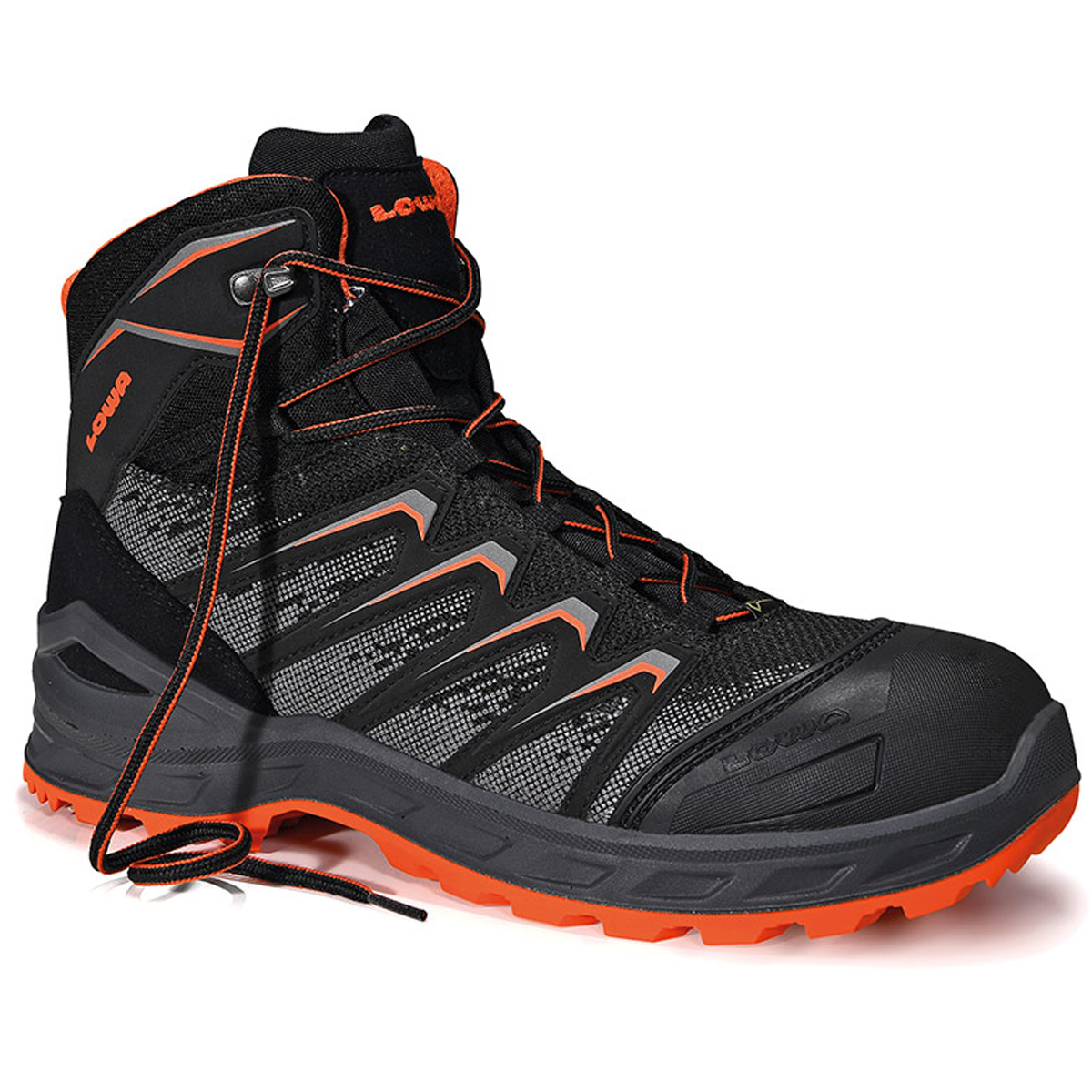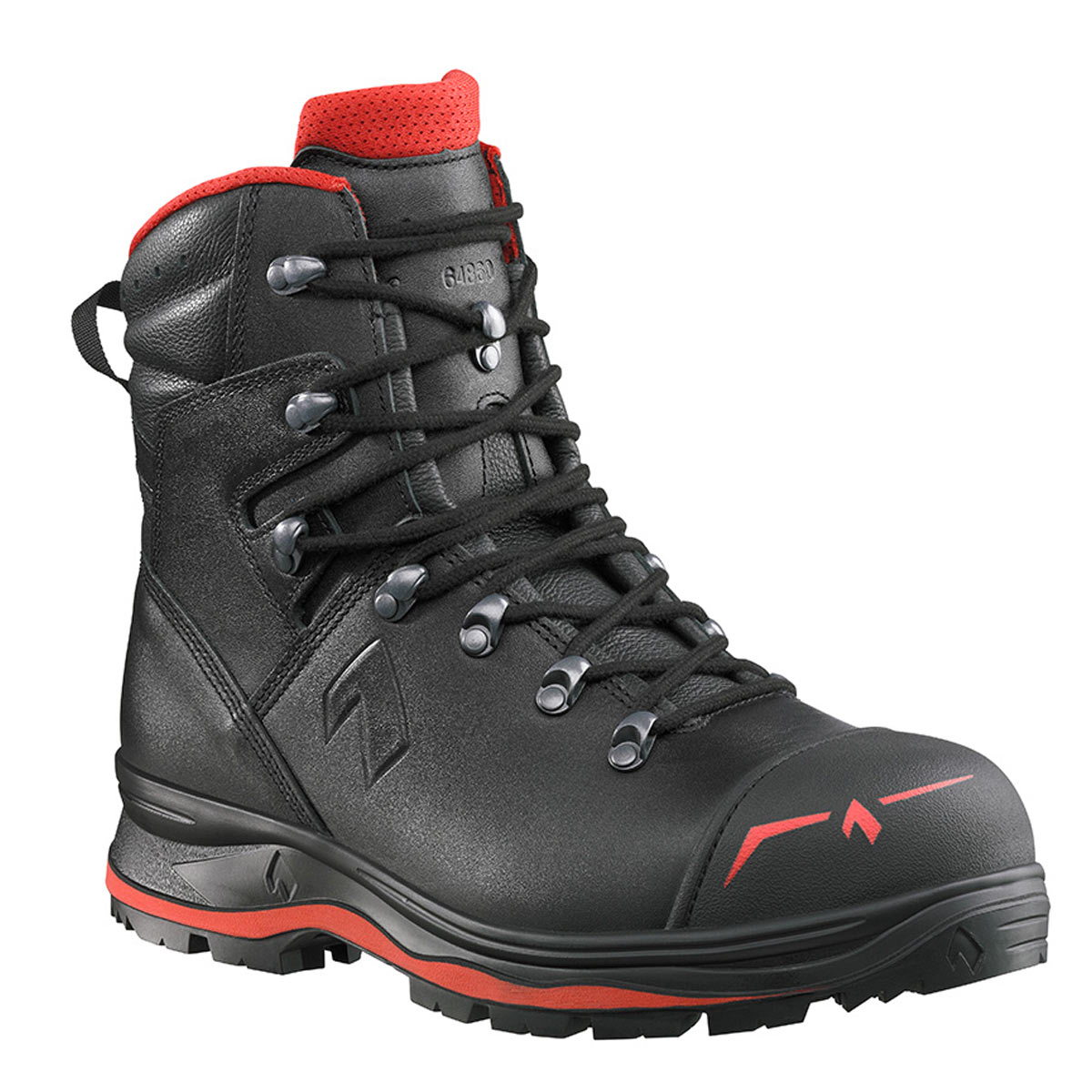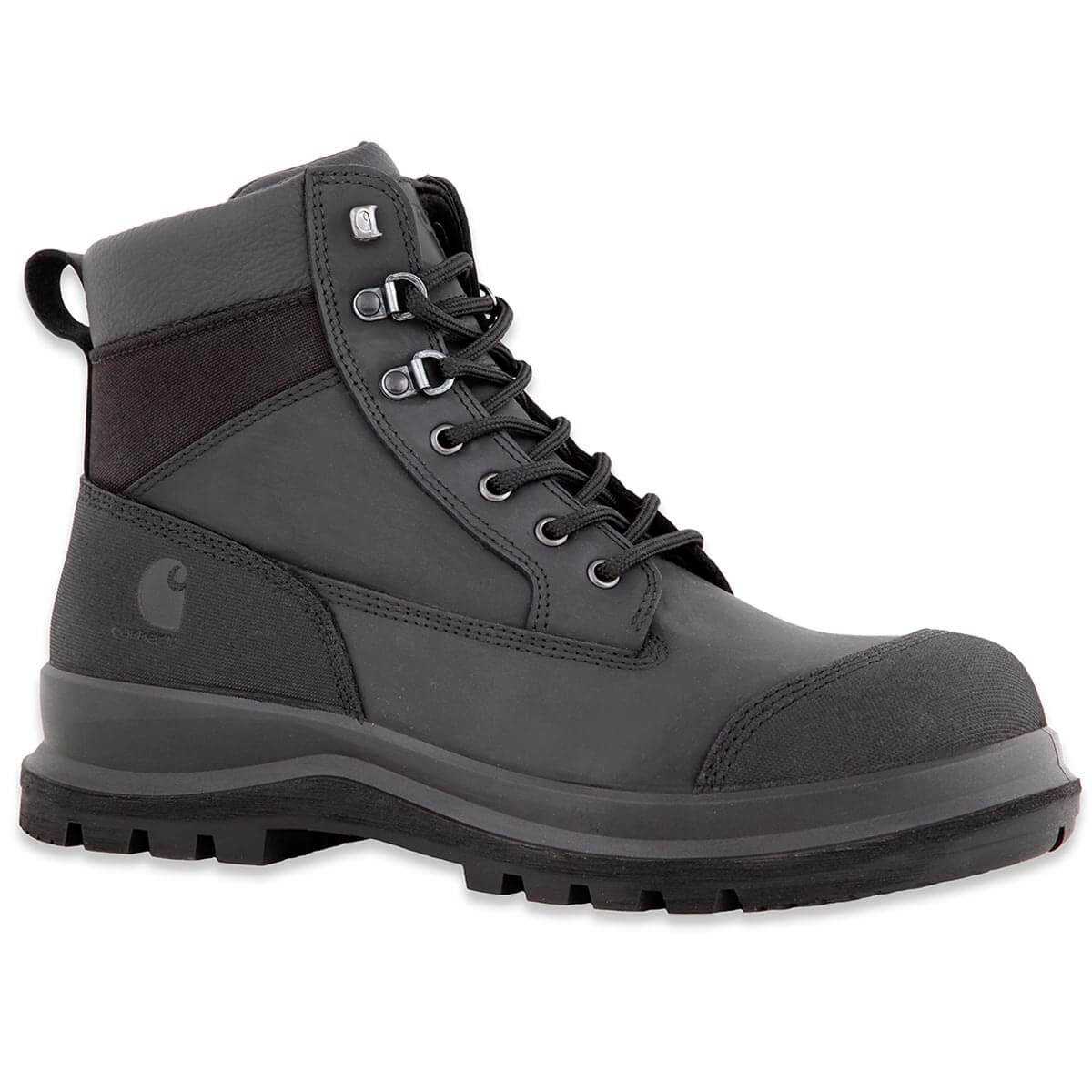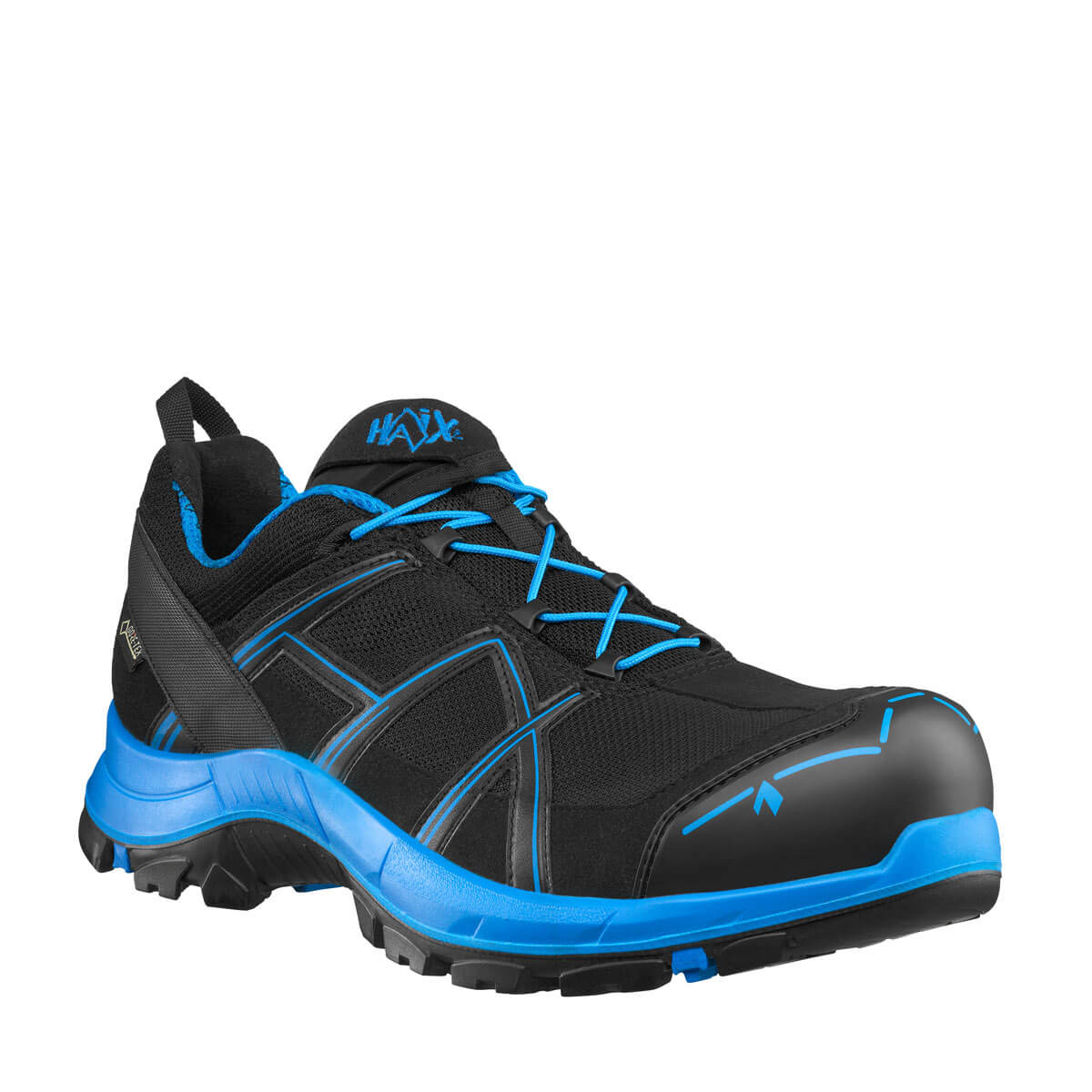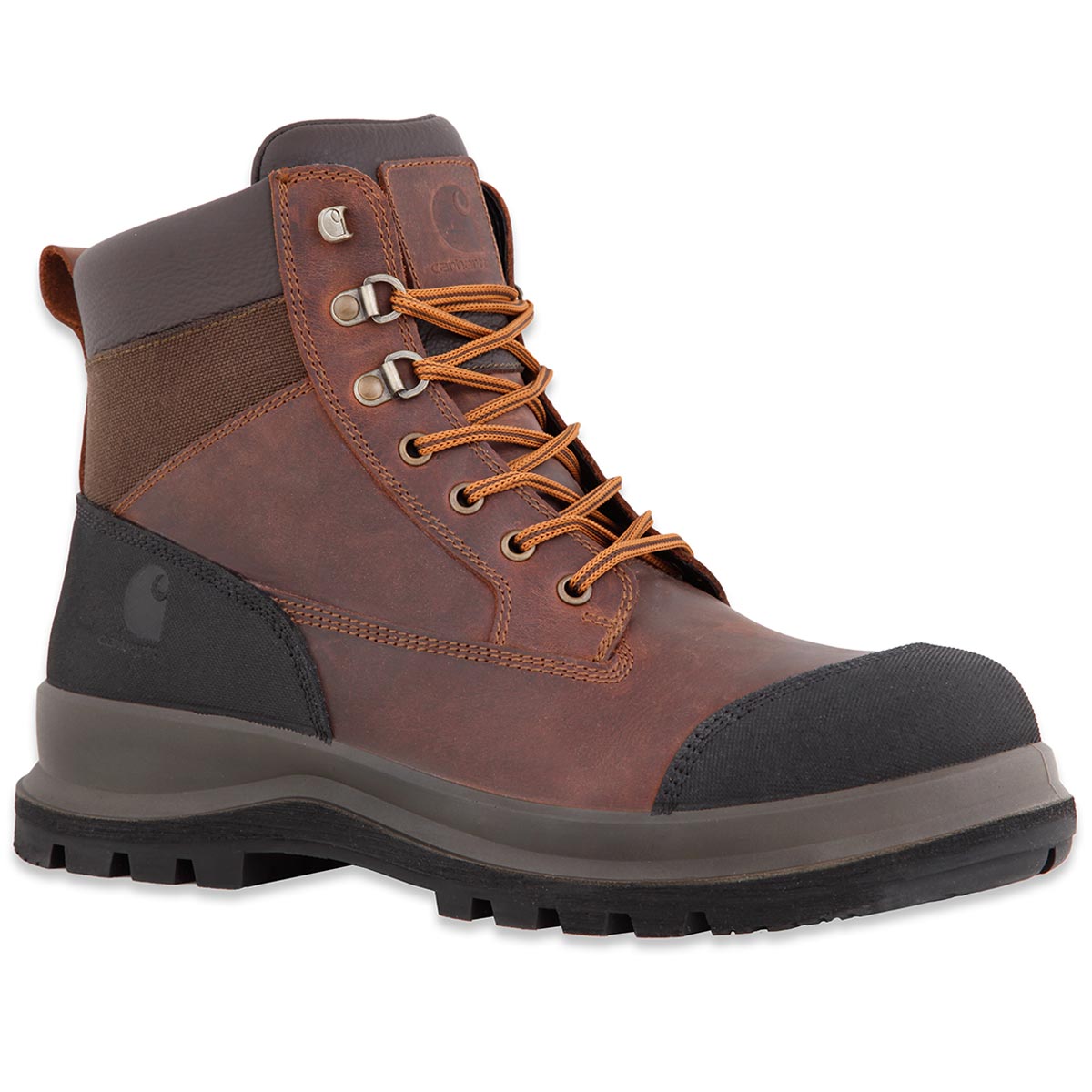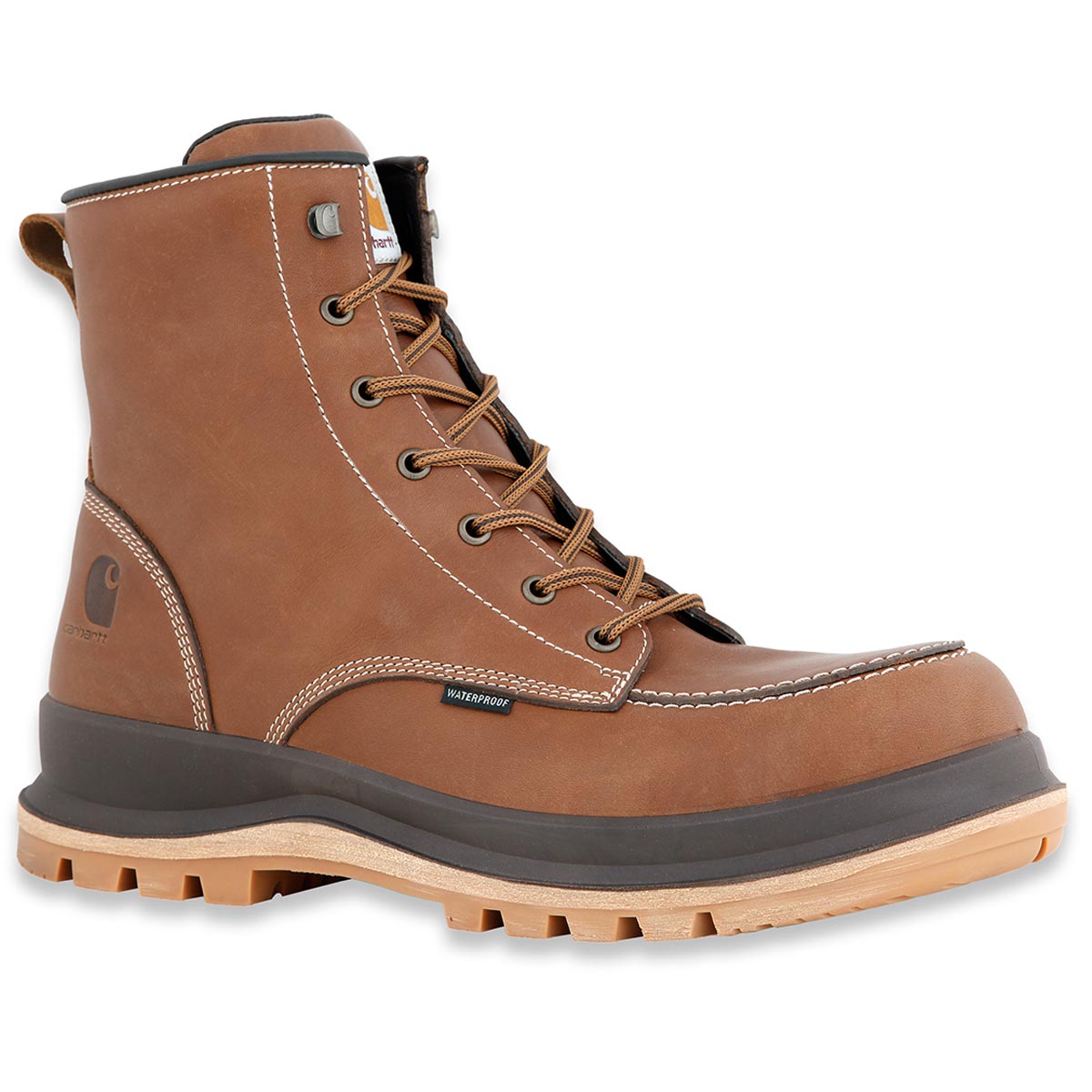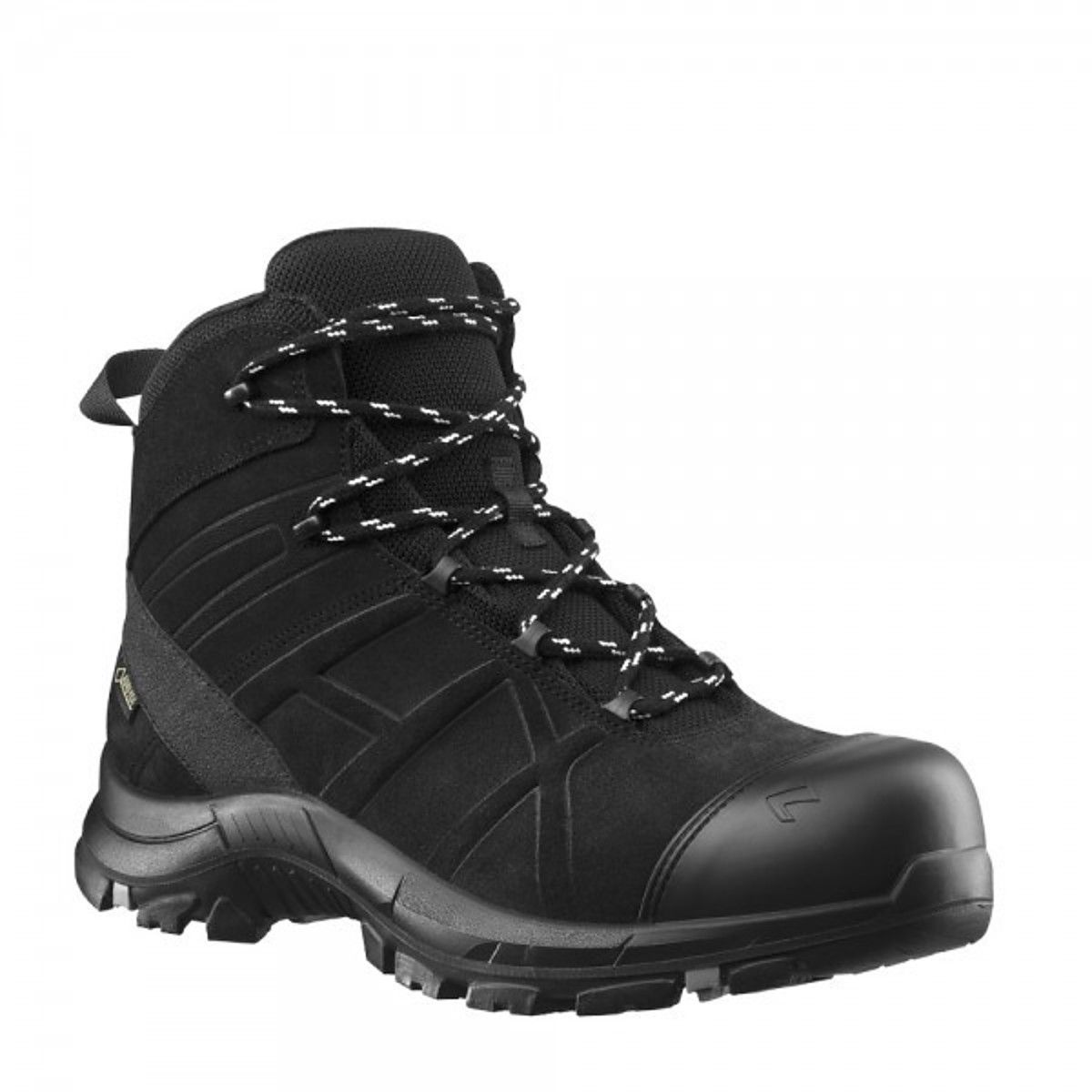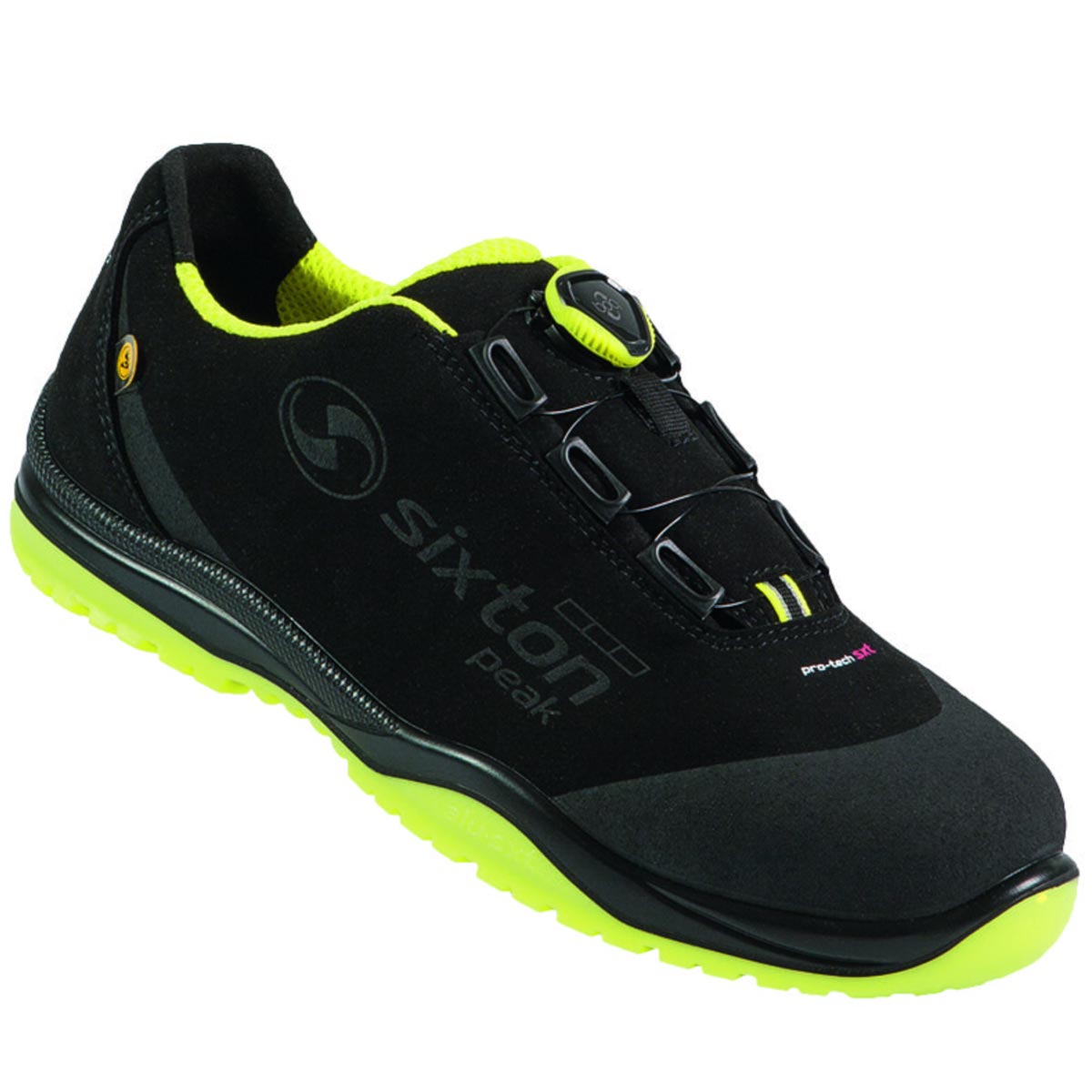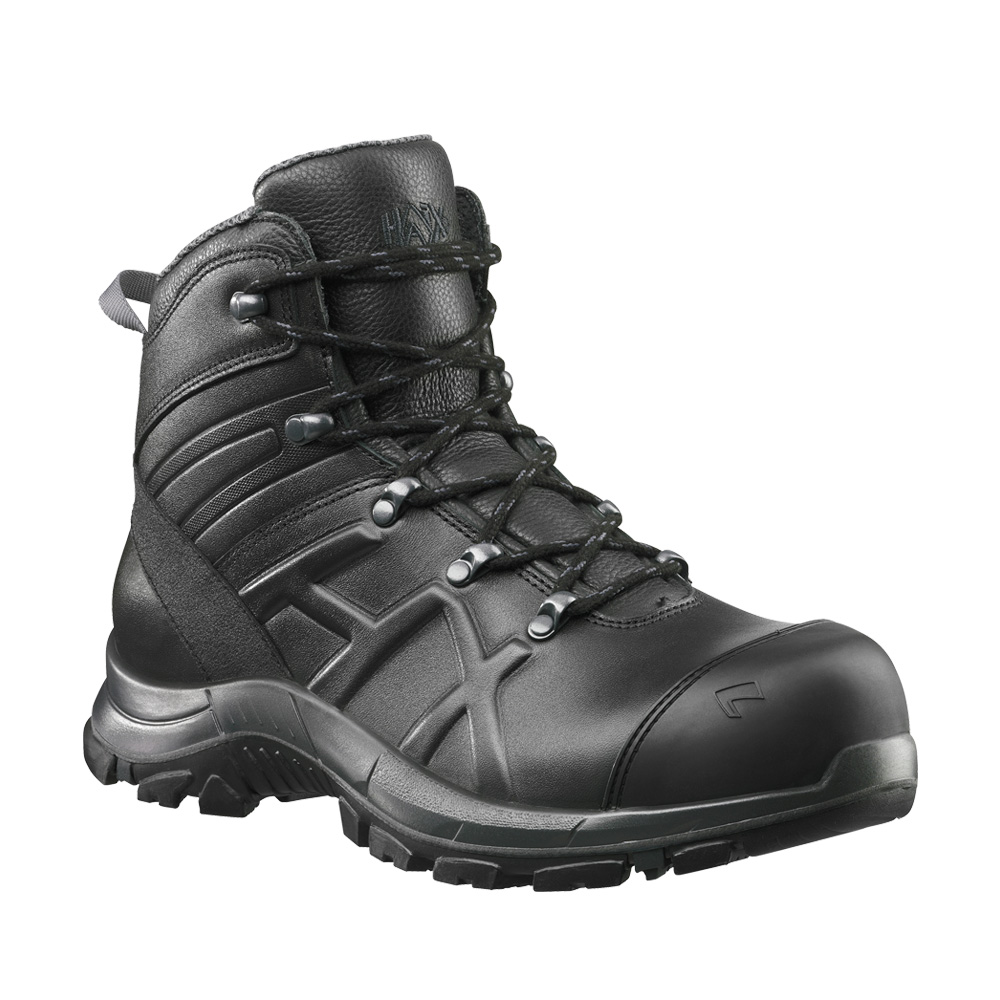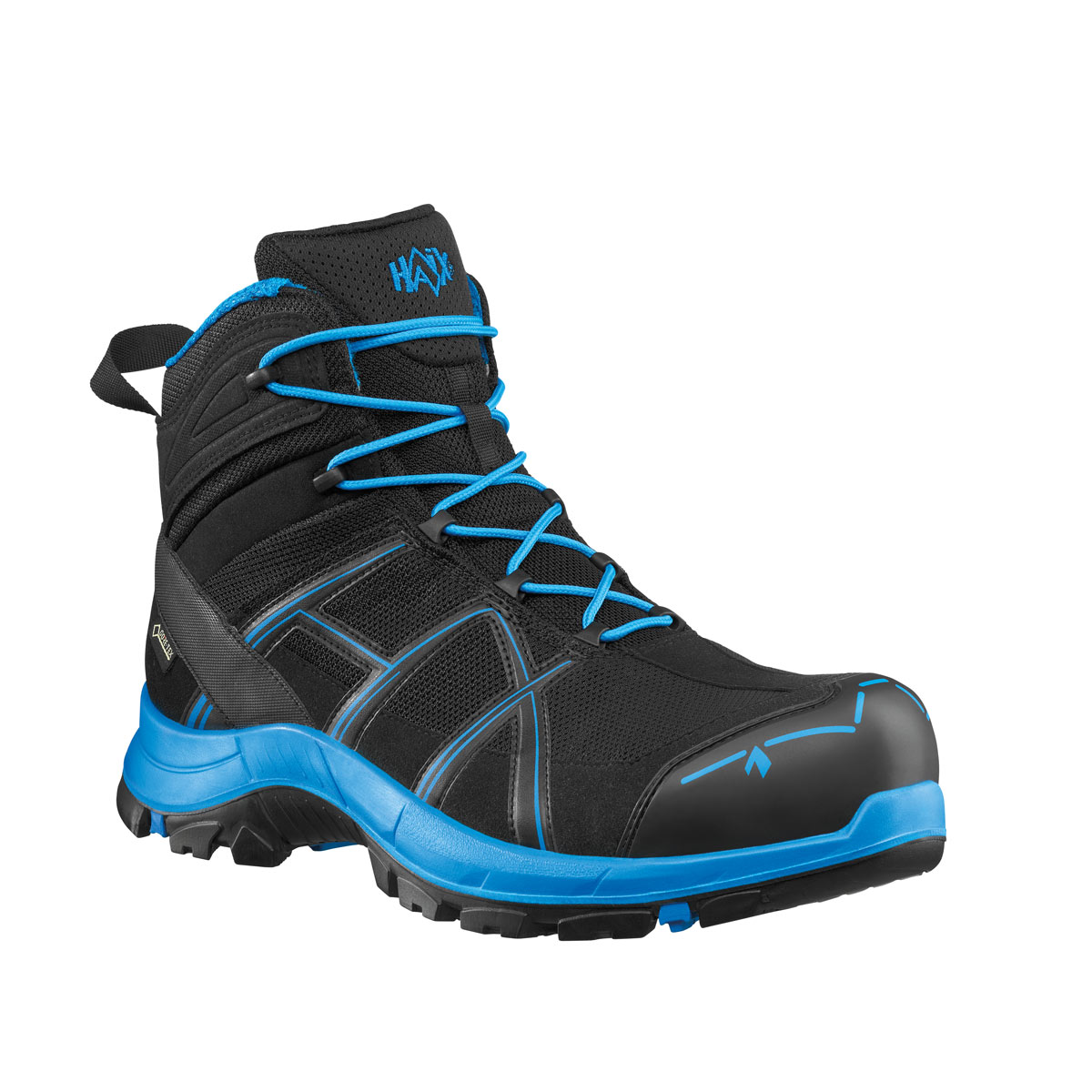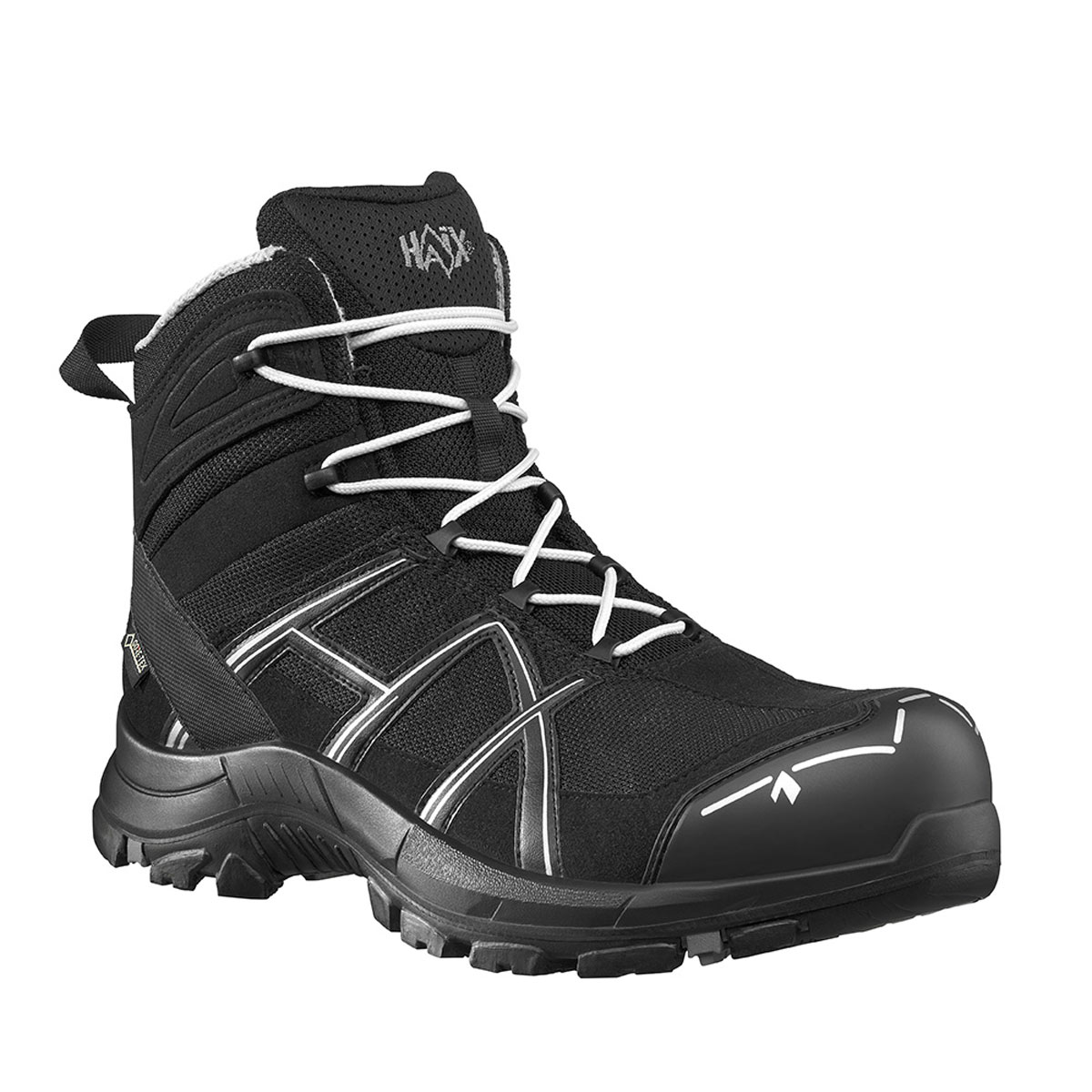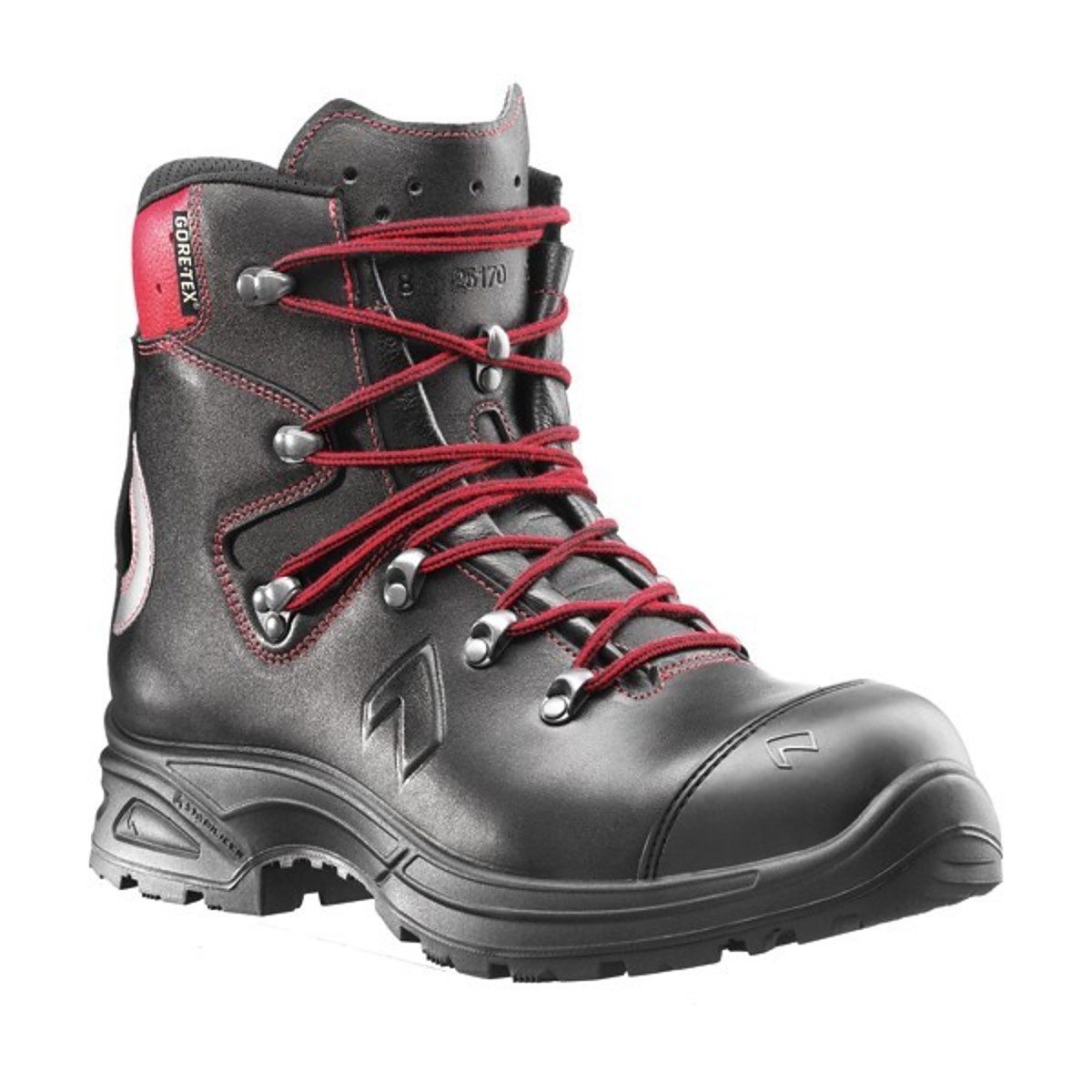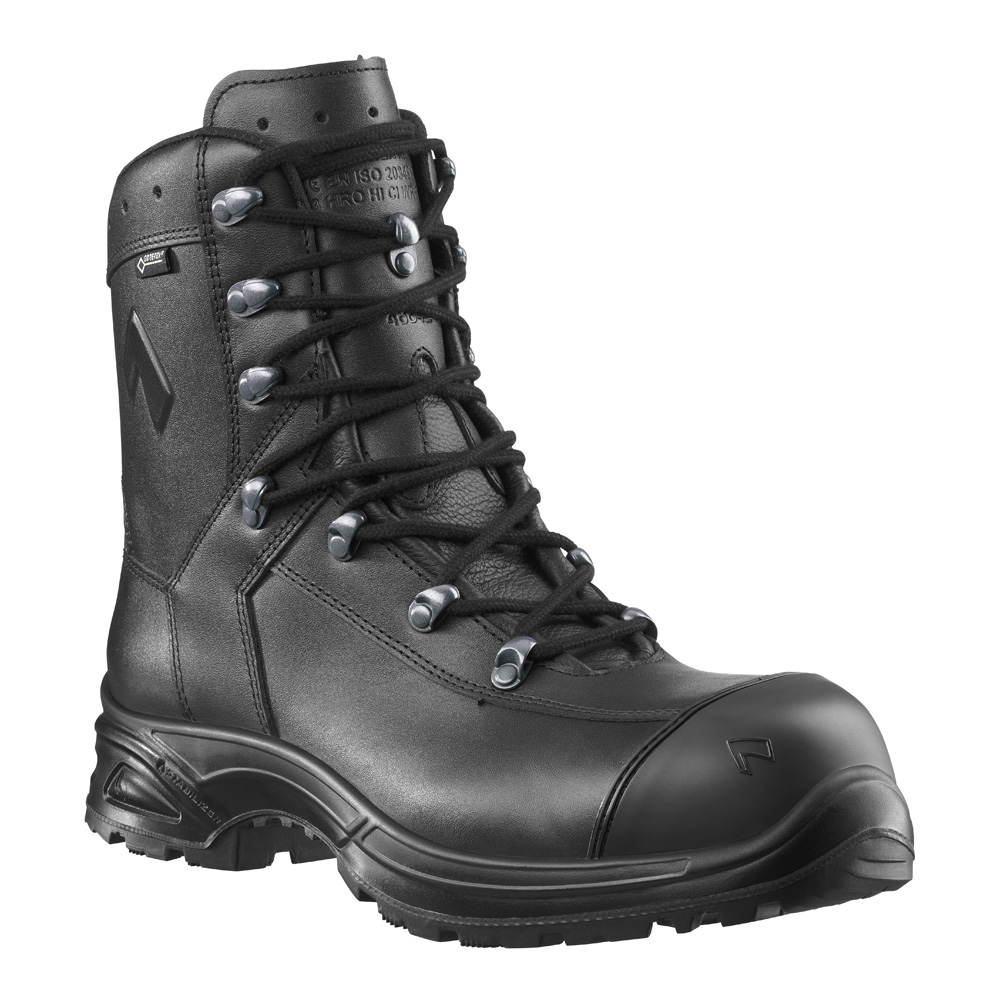
Filter products
Safety shoes - protect your feet at work
Safety shoes are mandatory in numerous professions. Employer's liability insurance associations prescribe this footwear for various sectors, such as industry, construction, gardening and landscaping, as well as firefighting, relief and rescue services. The fire department, THW and rescue services require shoes with highly slip-resistant soles and oil-resistant upper materials. For firefighters, shoes with additional thermal insulation are required. The shoe sole should withstand contact heat of up to 300°C. Other target groups that absolutely must be equipped with safety shoes are cooks or police officers. They are available as safety half shoes or as safety boots. Safety half shoes ensure a little more freedom of movement and a freer feeling than boots, but only offer protection to the covered area. Depending on the area of use, low shoes are quite appropriate and of course comply with general safety standards. Those who like it comfortable and whose work area permits it are well advised to wear safety half-shoes. High loads are also to be expected in the forestry sector. Here, in addition to basic protection with a toe cap, it is necessary to use shoes that have a high cut resistance. This minimizes the risk of major injuries caused, for example, by working with chainsaws. For all professions that are active in forestry or outdoors, it is important to choose a shoe that is impervious to liquids or moisture and is equipped with good cold insulation to provide sufficient protection in winter.
To guarantee constant progress, manufacturers like Elten and Haix exceed safety regulations and offer even more protection and comfort through highly functional, innovative technologies. Among the most important features of work shoes are protective toe caps or puncture-resistant soles. Some protective footwear is also characterized by a specially designed heel area.
Safety shoes and classes briefly explained
According to the DGUV rule 191 or GUV-R 191 there are several standardized categories. We at GenXtreme.de offer you shoes and boots for the workplace, which have certain protection classes. The classification into the respective protection class is regulated by the European standard EN ISO 20345. In the EN ISO 20345 basic requirements are listed, which have to fulfill professional shoes. These include:
- The height of the shoe
- The heel area for safety boots
- The thickness and abrasion resistance of the outsole
- Toe cap pressure and impact resistance
- Contact resistance (from S1 safety shoes are antistatic)
All shoes that are classified as safety standard S have a protective toe cap that must withstand an impact of 200 joules and are marked SB. Below is a brief explanation of the safety classes of safety shoes, the most important are:
- SB meets the basic requirement, has a protective toe cap, metal or plastic. These withstand a test pressure of 200 joules or a compressive force of 15 kN
- S1 is like SB, additionally antistatic, has a closed heel area and is fuel resistant
- S1P is based on S1, but with anti-puncture midsole
- S2 offers toe protection like S1, additionally water penetration and water absorption
- S3 includes toe protection, is waterproof and also has a puncture-resistant and profiled sole
In addition, closed boots for wet areas can be found, which are either fully molded or vulcanized. They must meet the following additional requirements and are divided into subsequent classes:
- S4 is a waterproof boot with toe protection, antistatic and has sufficient energy absorption capacity in the heel area
- S5 corresponds to S4, additionally with penetration protection and profiled sole
Additional specifications are also regulated in EN ISO 20345 and are marked accordingly:
- A – antistatic shoes (with appropriate contact resistance)
- AN – ankle protection
- C – conductive shoes
- CI – cold insulation (test at -20 °C)
- CR – cut resistance
- E – energy absorption in the heel area
- FO – oil and petrol resistant sole
- HI – thermal insulation
- HRO – behavior towards contact heat (heat resistance of the sole at 300 °C in minutes)
- I – electrically insulated footwear
- M – midfoot protection
- P – puncture resistance
- SRA – slip resistance on ceramic tile/cleaning agent
- SRB – slip resistance on steel floors/glycerine
- SRC – slip resistance passed on SRA and SRB
- WR – BResistance of the entire shoe to water penetration and absorption
- WRU – resistance of the upper part of the shoe to water penetration and absorption
Buying safety shoes - this is what you should pay attention to
Before you decide on a particular pair of safety shoes, you should pay attention to several things: among them is the fit, because only really well-fitting footwear will allow you to work pain-free for a long time. With a perfectly fitting shoe, you can withstand the greatest stresses. The right fit of a safety shoe is one of the basic requirements that should be met when buying work shoes.
Depending on the protection class, work shoes also offer a puncture-resistant sole and thus optimum protection against nails and other sharp objects. In addition to the penetration protection, a strongly profiled sole is advantageous, as this provides increased slip resistance. In the construction industry, a non-slip sole is indispensable.
Under certain circumstances, shoes with a toe cap are sufficient for some occupations. However, if additional requirements are placed on the safety shoe in certain professions, a shoe should be selected that meets these requirements. Using water-repellent and breathable upper materials, as well as equipping the shoe with additional protection such as thermal insulation, are safety aspects worth mentioning here.
The cold insulation is increased when the midsole is not made of steel, but rather a plastic. This also has the advantage that the shoe is quite a bit lighter and thus the wearing comfort is increased.
But good, durable safety shoes must also meet other requirements: A protective toe cap also protects against toe crushing if your feet ever get caught under the wheels, against falling objects and against mechanical force. These protective caps can be made of steel, plastic or aluminum and are incorporated between the lining and the outer material. Such special protective caps can withstand up to 200 joules.
The upper material of most safety shoes is made of leather or plastic or a mixture of both. Ideally, safety shoes were made of breathable materials and are also water repellent. Necessarily, some safety shoes are provided with a high cut resistance. The easiest way to find out what protective properties the work shoes in your industry must fulfill is to refer to the safety rules just mentioned. Here, certain materials may be prescribed for your industry - for example, in some industries only steel toecaps are allowed. In addition, some industries only allow safety boots, while others also allow the wearing of low shoes.
Other models, in turn, have a closed heel area, which also has a certain energy absorption capacity. In addition, some safety shoes are also protected against electricity, prevent the passage of water, have a non-slip sole or offer protection against thermal effects. Thus, the outsole provides the optimal basis for moving quickly even on difficult surfaces.
Some shoes not only support energy absorption, but also have a zipper that allows them to be put on and taken off quickly. This is particularly important for rescue workers or firefighters, but it does not impair the protective effect of the shoes. For this reason, safety classes are not the only decisive factor in choosing the right footwear; special accident prevention regulations may also play a role.
Orthopedic safety shoes
Painful feet or even pain in the back can be the consequences of a malposition or have their cause in the wrong foot protection. After consulting a doctor or orthopedist, the question of certified insoles may arise. These regulations are defined under DGUV Rule 112-191 (also known as BGR 191). These special insoles are specially adapted to your foot and thus offer you special comfort and an excellent wearing sensation during the working day.
Allowances from the employer
Employers can provide subsidies for safety shoes and work clothes and claim them against tax. The willingness to subsidize occupational safety and the amount can be requested directly from the company. In addition, we offer corporate customers collection slips on which subsidies are noted. This means that invoices can be processed directly via the company, but the shoes can be tried on and taken away in the store in Kaufbeuren.

